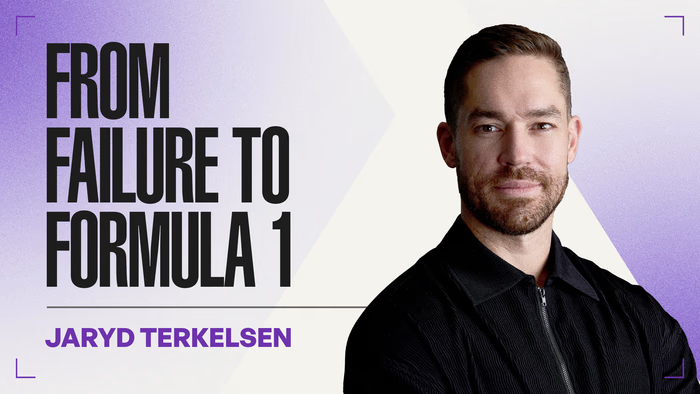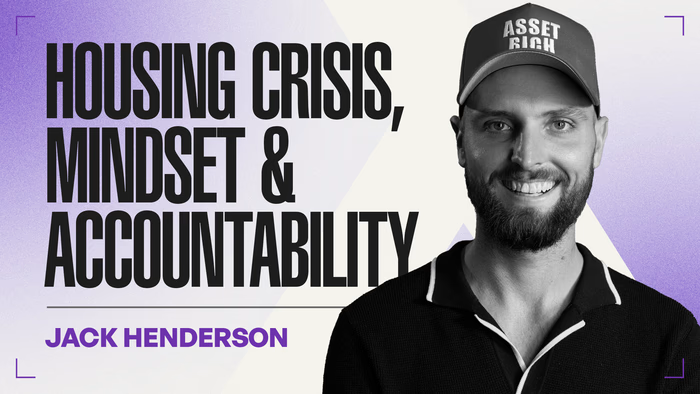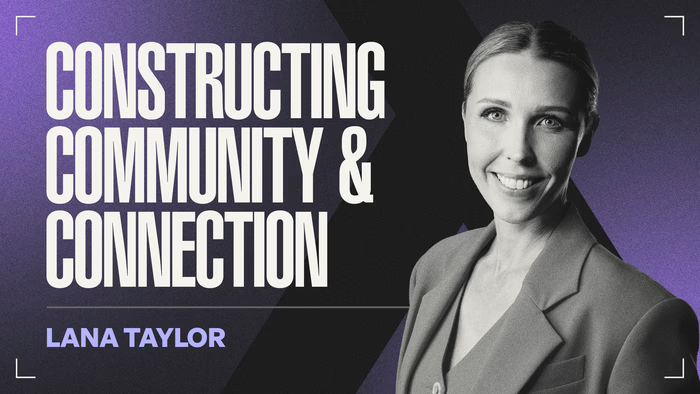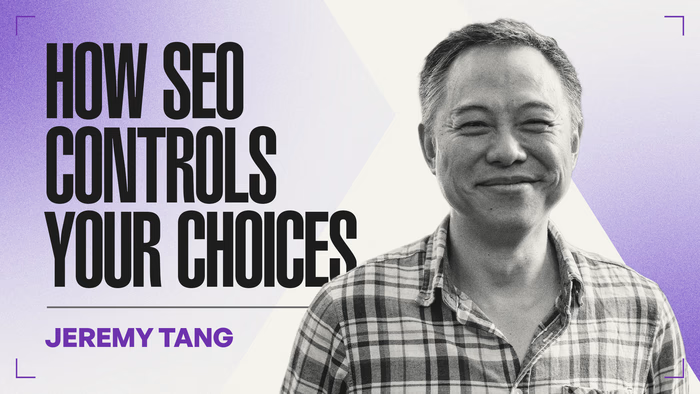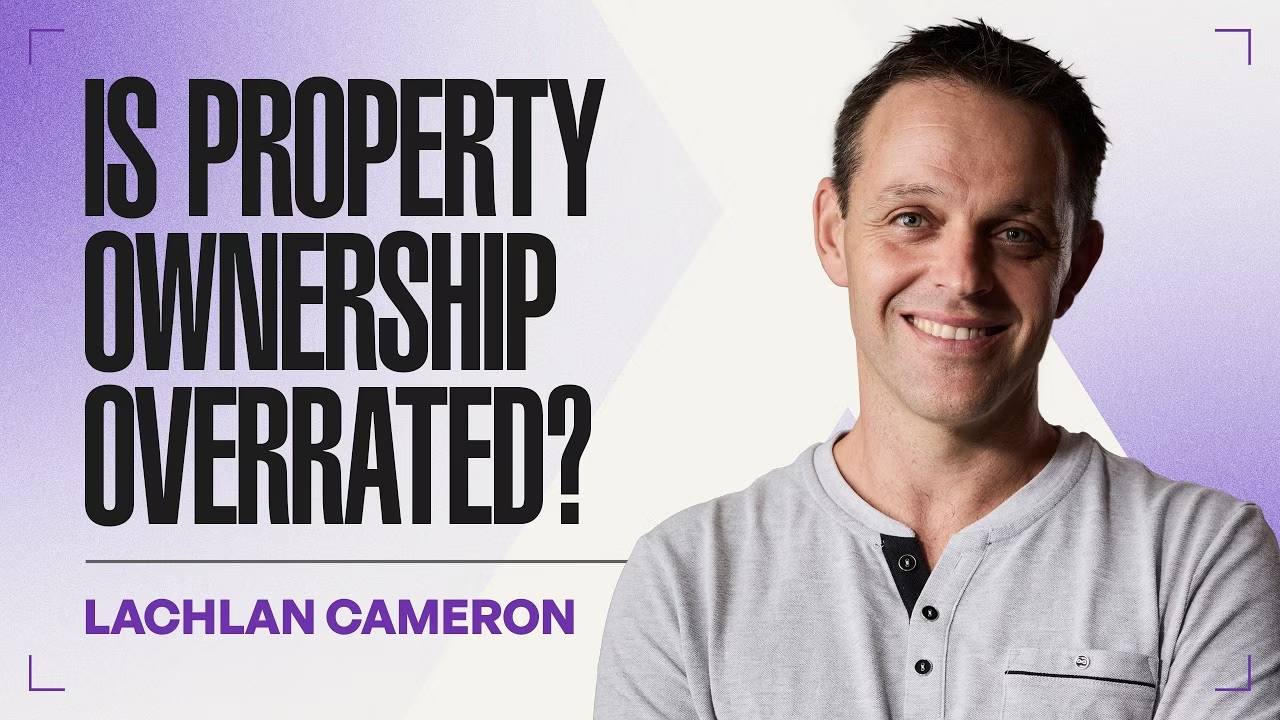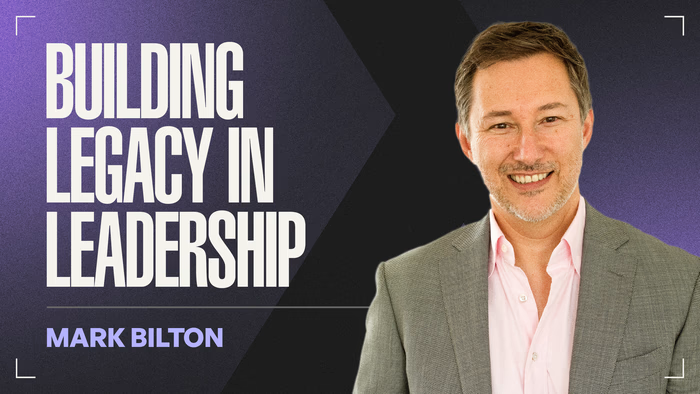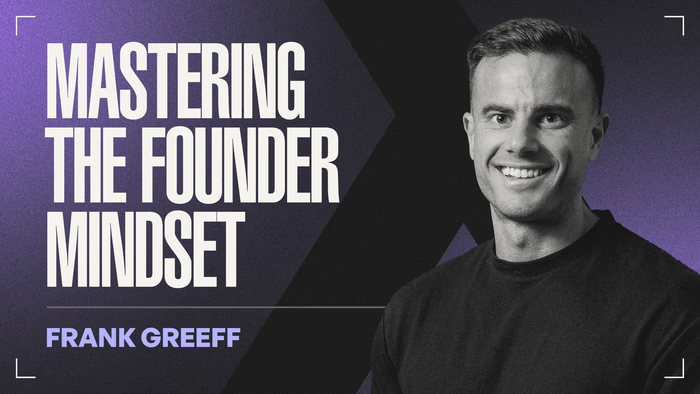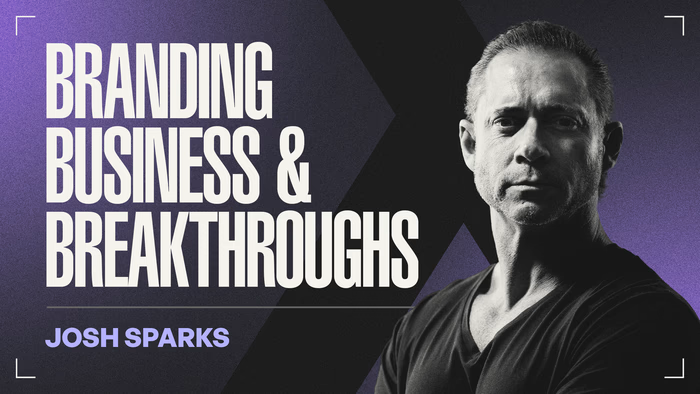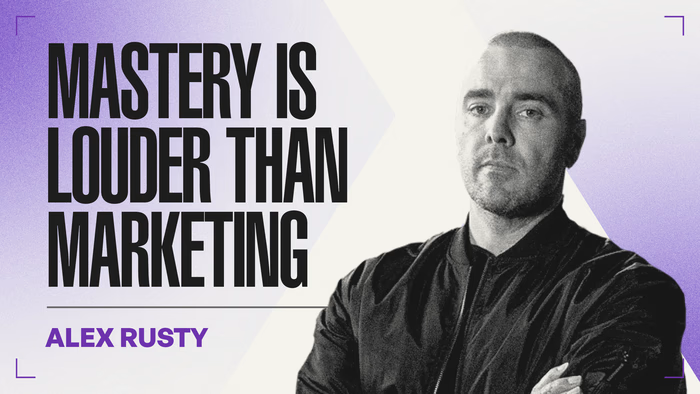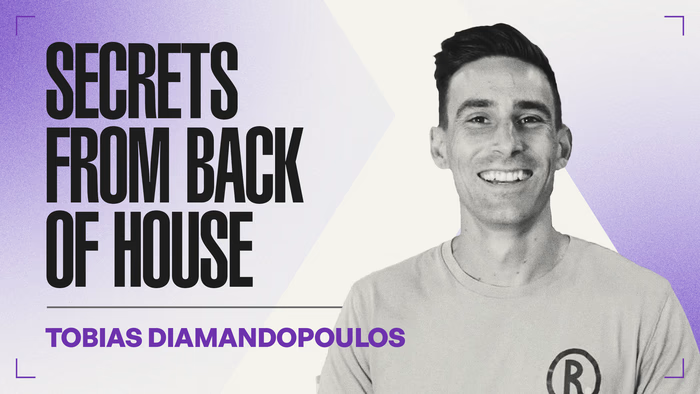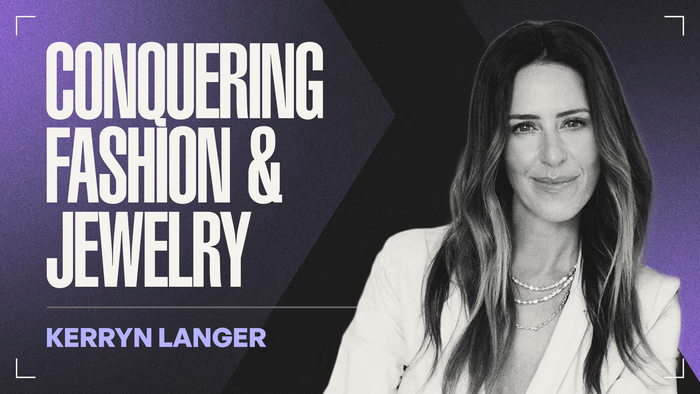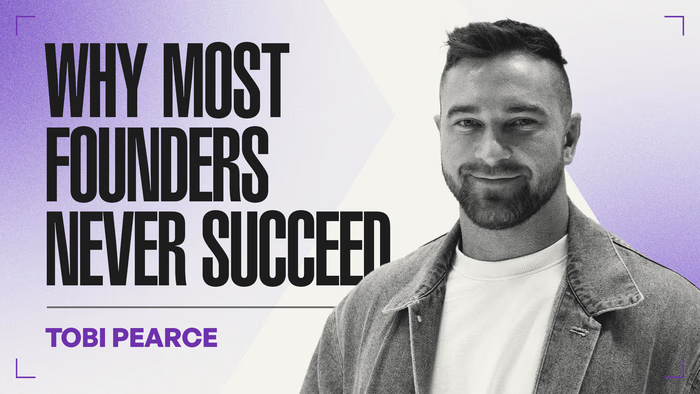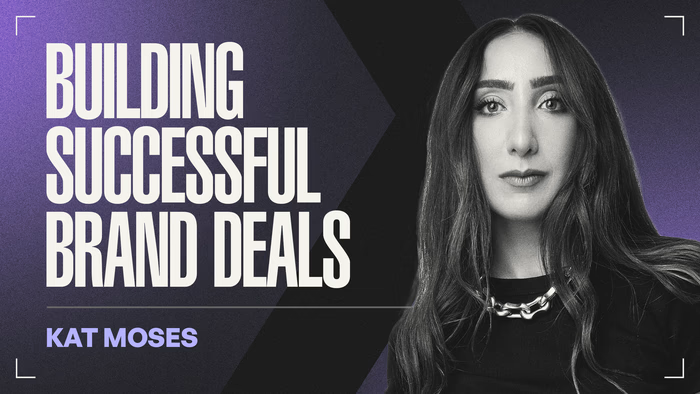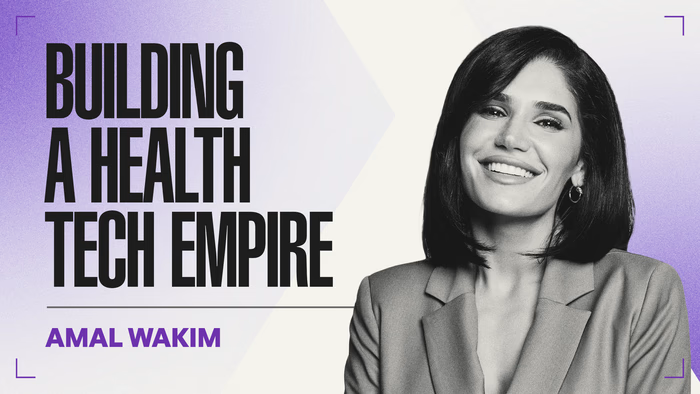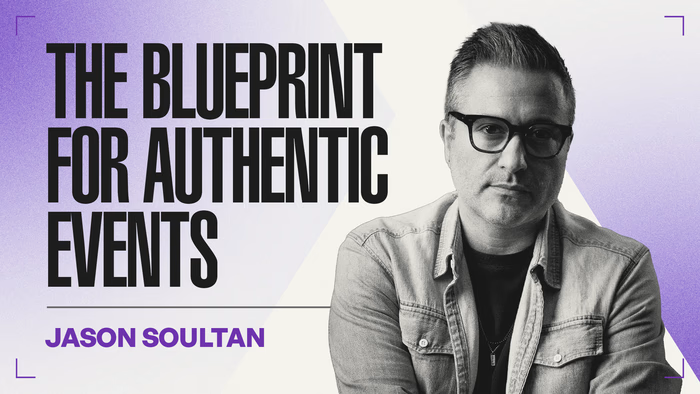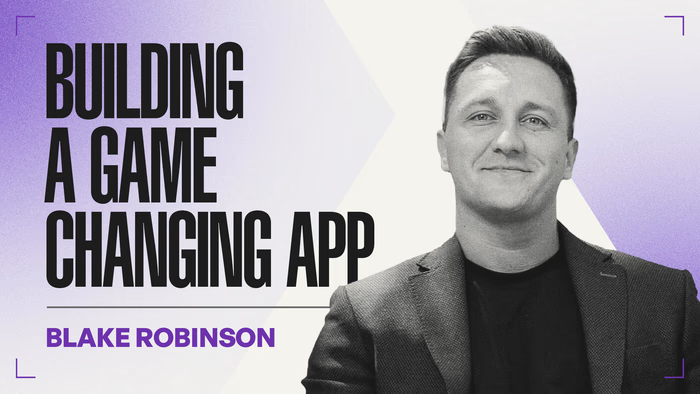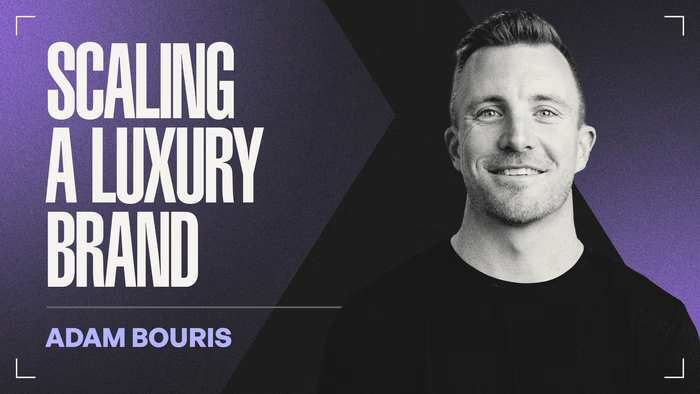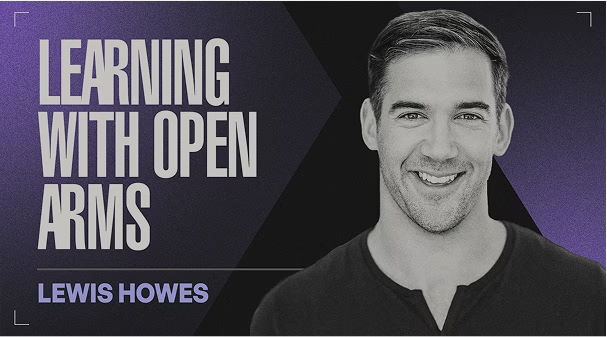Stop Losing Money: E-Commerce Advice That Scaled Brands to $500 Million | Paul Waddy



TLDR
Summary
The interview features Paul Waddy, a globally recognized e-commerce expert and author, who shares his direct, contrarian philosophy on building and scaling e-commerce brands, drawing on his experience with companies like Showpo and Budgy Smuggler.
Paul asserts that most online stores fail because they lack product-market fit and a strong brand. The biggest differentiator in today's saturated market is the brand that sits on the product, which is why the strongest brands he works with spend the least on marketing.
Core Business Framework (ICE):
Paul distills his methodology into three core pillars: Idea, Capital, and Execution.
- Idea (Product-Market Fit): Paul's litmus test for a good idea is organic sales; if a business cannot generate initial revenue without spending on ads, it lacks product-market fit. Founders must understand they are not their customer and must perform constant competitor review to find gaps their product can fill.
- Capital (Financial Nouse): He emphasizes that finance is not sexy, but it is critical. Paul uses the 50/30/20 Rule (50% Gross Profit, 30% Operational Costs, 20% Net Profit) as a universal framework for unit economics. Businesses must maintain sufficient gross dollar margin to afford customer acquisition, and he vets all clients' financial skills, viewing strong math as foundational to success.
- Execution (Strategy & Mindset): This is where most founders get stuck. Paul advises:
- Don't Discount: Discounting devalues the brand and creates an opposing strategy. Sales spikes from discounting are often a sign of a broken business model used to mask high operating expenses.
- Get Out of the Way: Founders must overcome their ego and learn to operate the business based on data and frameworks, not personal vanity or impulse.
- Overcoming Trauma: He shares his personal journey of being broke and facing financial ruin, stating that failures—when learned from—build the resilience needed to succeed.
Paul's mission is to help people improve their lives using e-commerce as his vehicle. He encourages entrepreneurs to embrace the long game, emphasizing that the power of a strong brand will always win over short-term gimmicks.
Highlights
- Brand as Differentiator: The greatest brands he works with spend the least on marketing and grow the fastest, proving that brand strength is the key differentiator in saturated e-commerce markets.
- Product-Market Litmus Test: The best way to test product-market fit is by generating organic sales (revenue without ad spend); if you have to pay for initial sales, the product is likely not good enough.
- The 50/30/20 Rule: A simple financial framework where Gross Profit must be ≥50%, Operational Expenses ≤30%, leaving a target of 20% Net Profit.
- Discounting is Broken: Discounting is a symptom of a broken business model (high costs/low margins), which trains customers to wait for sales and devalues the brand.
- The Ego Trap: The biggest mistake founders make is believing they have all the answers. E-commerce isn't taught in school, making financial literacy (unit economics, profit margins) a critical, but often neglected, skill.
- The Power of Adversity: Paul's own financial ruin became his greatest lesson, leading him to believe that business owners must "audition" their suppliers' payment terms to fund their growth.
- Hook Strategy: Copywriting must employ a strong hook strategy, such as Authoritative (I am the expert), Transformative (before/after results), or Curiosity (baiting customers with questions) to capture attention.
- Final Vision: His mission is to be the "best in the world" at what he does, driven by a genuine desire to change people's lives through the financial freedom e-commerce provides.
Transcript
00:00:00 - 00:00:55
I want to help people. Like, I want to change their lives. And I'm pretty good at e-commerce, so that's how I'm going to do it. And I've got a pretty [ __ ] good track record of it. Paul Wadi is a globally recognized e-commerce adviser, thought leader, and author with over 15 years of experience scaling high- growth brands that collectively generate over $500 million in annual revenue, including Chopo, Budgie Smugglers, and Who is Elijah? I take my job seriously and that if that means telling someone
00:00:27 - 00:01:32
that their their business sucks in the first meeting it will never work, then that's what I'll do. He's the author of Amazon's number one bestseller, Shopify for Dummies and Selling Online for Dummies. He's a multi-awward-winning e-commerce authority and is a trusted authority shaping the future of global e-commerce. If you turn your meta off and your business is gone, your brand is not strong enough. That's that's tests the real power of your brand. A lot of these brands are putting
00:01:00 - 00:02:02
out false information about how well they're really doing. Some of the greatest brands that I've ever worked with spend the least on marketing and grow the fastest. My mission is to help people improve their lives using e-commerce as my vehicle. My vision is to be the best in the world at what I do. I'll let you in on one of my little secrets. There's a number for everything and there's a system for everything in each. I would like to welcome Paul Wy to the agency podcast. What an intro. Thanks,
00:01:37 - 00:02:22
D. I was like, who is this guy? It's Dude, there's so much to research about you. It was awesome. Oh, that's good. I appreciate being here and thanks for having me. I'm I'm really pumped about today. I think um this is going to be fun. It's going to be fun. And I think that um you know, we've worked with clients for 5 years in e-commerce and it seems like there's a lot of contradictory advice out there. People are saying different things. They got different hot takes and unfortunately uh
00:02:00 - 00:02:52
a lot of the times they're joined at the hip with an agency that sells a product or a service which might inhibit their their teaching. Yeah, you're not wrong. I'm joined at the hip with no one. Um and you know, I think what we'll hopefully learn from from from this today is that um I'm pretty direct. my my wife says I'm harsh at times, but I take my job seriously. And that if that means telling someone that their their business sucks in the first meeting, it will never work, then that's what I'll
00:02:25 - 00:03:12
do. And um you know, broadly speaking, I like to zigg when other people zag. I don't like to do the same as everyone else. So, if we can, you know, [ __ ] a bit of [ __ ] up today, then let's uh let's do that. Oh, man. I'm excited for this one, dude. Let's roll. So, Paul, I want you to take me deep down the rabbit hole on e-commerce. um when it comes to e-commerce and Shopify like what kind of brands succeed and what kind of brands failed and and think about this from a branding perspective. Well, I think
00:02:49 - 00:03:40
that's actually the key is the branding, right? So, if you think about, you know, going to China and starting a t-shirt brand or a fashion brand as every Tom, Dick, and Harry wants to do these days, right? It's too common. I'm going to start under power brands. I'm going to put my logo on a shirt. Good to go. Exactly. And the world doesn't need another, you know, women's fashion brand. It it really doesn't, right? So, it's like, what have you got that's special? So, if I went and got an AS
00:03:14 - 00:04:15
color t-shirt, you know, a great ASC color t-shirt, and I put a brand on it, and then you do the same, and then Cam does the same. And what is the difference? The difference is the brand that sits on that shirt. That's the same quality. It's the same GSM. It might be, you know, Cam's might be 300. Mine might be 100. What justifies the price is the brand more than anything. And I I I think that's a great place to start because in my world, the strongest brands that I work with spend the least
00:03:45 - 00:04:43
on marketing and grow the fastest. It's as simple as that. Like it's not it's not rocket science. I'm not saying it's easy to build a brand. But I am saying that I think the key differentiator is the brand. You know, it's it's as simple as that. We can all go and start a t-shirt brand tomorrow, but it's got to have some special source. Now there are other things of course like good you know good margins and good unit economics and yeah good marketing and good creative and all those things but
00:04:14 - 00:05:15
fundamentally what makes you part with your money and that is I think the desire to be a part of something and that something is probably a brand and you've worked with a lot of fashion labels um you know one that comes to mind for me is Shopo um you know and they're doing exceptional work out there and like when it comes to I guess building another brand in a market that's flooded. Um, you know, with this with this space being so saturated, what can a brand do to start to get breakthrough? Um, and let's be realistic
00:04:45 - 00:05:41
about that. Is is it in any way, shape, and form about the product market fit? Is it purely brands? What's your take on that? Yeah, it is product market fit. So, for some reason, um, I'm drawn to women's fashion. Um, I find myself in women's fashion a lot. I don't mean in the clothes, but I mean in the in terms of the clients that reach out to me. There's a lot of, you know, women's apparel brands that I would would coach. Um, you touch on product market fit and I think I wrote a blog about this a
00:05:13 - 00:06:09
couple of weeks ago because that is where it all starts, right? And product market fit, if we think about what that is fundamentally, it's asking yourself, does your product meet the needs of your potential customer? And not enough brands actually think about that. They're like, yeah. And one of the things that I go through with new brands that come to me, they'll read their Instagram bio, that's a little test, and then I'll be like, "Oh my god, like too much of this, right? Like we're
00:05:41 - 00:06:33
affordable luxury." Like, "Oh god, we're affordable luxury. What does that even mean?" And that was me when I started my first business. Yeah, we're we're just great quality but better, you know? We're we're we're great quality at a better price, but that really just doesn't mean anything. And so product market fit um is asking yourself really if you had if a consumer had your website up and two of your competitors, why would they buy from you? And it's
00:06:07 - 00:07:02
that age-old concept of supply and demand. Now in women's fashion, there's uh enormous demand, but there's also a massive over supply. So again, you've got to carve out, you know, the little section, the little niche of your market for you. And I I actually think that people and you would see this as well, Dane, that too many people start a brand, crank some ads, and then just like like Homer Simpson, you know, can I get paid now? It doesn't work like that. I just think of that scene where he like
00:06:34 - 00:07:15
sets up that little um uh he's trying to run the power plant from home and he's got that little bird that likees. Yeah. They're like, I think I'm just going to set up this e-commerce store and it's just going to run itself and it's going to run itself and then I'm going to get paid and it's going to be amazing because there's a lot of gurus out there that teach you that that is how easy it is. But I think that's where it all starts is like probably in your business
00:06:55 - 00:07:51
as well in my business is there's a need and you know what I reckon I can probably fill that need better than most people. The same exists in consumer products. Uh but people just believe it's get some products, stick a label, run some ads and people will buy it. But yeah, yeah, if you don't have product market fit, you you won't work. It just simply won't work. So, how do you test the product market fit? What I always like to see are some organic sales up front. So, for instance, when I get
00:07:23 - 00:08:07
really excited about a brand is when they tell me, "Yeah, we've, you know, we've scaled to 20, 30, 40, 50 grand a month." And I say, "All right, how much have you spent on ads to do that?" And they say, "Nothing." And I'm like, "Oo, okay, we could be on here." or that is the best way to test whether somebody organically whether you do have that organic product market fit right because you didn't have to pay to convert them to there's something that they're like I
00:07:45 - 00:08:43
want that I want that there's they're telling their friends and good news travels fast you know like we like we don't have to jam ads down people's throats or at least we shouldn't right we shouldn't have to because people should be talking about our product so I think you know that's probably the first uh indicator the other thing you want to do is read their reviews and the the reviews of their competitors. So, I guess it's a little tip for some brands who are starting out is to go ahead and
00:08:14 - 00:09:15
read the reviews of your competitors. Yes, look at the positives, but look at the negatives. Collate the data on the negative reviews, the top two or three kind of one, two star reviews and see if your brand can actually plug that gap, you know, and that's a little bit of a gap analysis to say, well, what can I do? where can my value proposition sit in this crowded market? But certainly um you know I think organic sales without having to jam them down pe down people's throats is probably the the best
00:08:45 - 00:09:39
indicator and that and that's how some of the biggest brands out there like Zara and those sorts of that's still how they test thing. They buy small runs of products, they stick it in the store. They don't do huge campaigns on it. They stick it in the store. They see what works and then they double down on it. That's a famous al um did I say? That's a famous Zara strategy. So, it's just gently test things. Don't test things by throwing the kitchen sink at it because traffic will find its way. Eyeballs will
00:09:12 - 00:10:03
find its way and then sales will start to come. So, honestly, it might sound silly, but the easier the sales come, the more likely you are that oh, you actually you're actually on to something here. How can someone test uh to see if they they have a product market fit before they invest in a Shopify store and building a brand? Yeah. Yeah. Yeah. I think that's a really good question and I think as founders, you know, we all tend to start these businesses based on what we like and we're like, yeah, I
00:09:37 - 00:10:33
I just did it with my my first business, shoes. I just went out and found these, you know, containers of shoes in China that I thought were really cool. And I was like, well, I'm a sample size of one. Like, let's probably broaden that out a little bit. So, I think you could probably start by saying, well, I've got an idea now. I've, you know, I've ideiated on an idea. Now I need to validate it. And what does that mean? It means work out if other people also think it's a good idea. And I don't mean
00:10:05 - 00:10:56
like your friends who are going to say like, "Yeah, Paul, that's that's such a sick idea. Like you're going to you're going to make it, man. I like cheerleading, but like I I also like the truth." Uh so I think what you've got to do is find a sample size of, you know, 10 or 20 people who are in the same demographic that you're trying to target. So, if you're trying to, you know, if you've invented, I don't know, a Pilates tool that helps bad backs or
00:10:30 - 00:11:20
whatever, well, you're not going to ask, you know, 55y old men, you're probably going to find a group of people, you know, with bad backs who also do polar, you know, so you find your your sample size. And then you kind of um I think you want to lead them to a certain point. So, you don't want to sort of say, hey, I've invented this product. What do you think about it? I think you want to firstly validate whether they have the same problem that you do, right? So, tell me about your bad back.
00:10:55 - 00:11:46
Oh, it's really sore and it flares up. Right. Um, does yoga help it? Yeah, yoga really helps it. Would you be prepared to pay for a device that would help you with it even further? Absolutely. If so, how much would you be prepared to pay? Right. So, you're taking them along the journey, getting the research, and then you're introducing the product at the end. Yeah. Rather than just saying like, "Yeah, here here's the product we've made. What do you reckon? Rate it or not?" You know? So I think it's just
00:11:20 - 00:12:10
like validating whether you know business is about problem solving. Whether it's you or me, we're solving a a problem for people. Even if you're selling dresses, you're still solving a problem for people. So firstly, you're validating the size of the problem. Do other people experience this problem? Would they pay to have the problem solved? And do they think that my problem solves it? And then take it to market. And I always just play the averages. Like if you go through those
00:11:46 - 00:12:34
steps of validating your product as best you can, there's probably a better chance that it's going to work than if you didn't do those steps. Well, there's never any guarantees of success, but there are steps you can take to increase the likelihood of your business working. And it's it's just a bit of, you know, bit of uh surveys and, you know, asking the question and people don't ask their customers questions enough as they think they know everything. It's ironic that
00:12:10 - 00:12:56
the thing that they want to do is sell to a customer yet they know nothing about their customer. Yeah, most brands don't still don't survey their customers. It's like, oh, I wonder if um I wonder what's conver, you know, creating this conversion rate dip or I wonder, you know, I wonder if customers would like it if we gave free shipping at $100. Like, just [ __ ] ask them. Just like they're there. They're right there. Just ask them. But they won't. Um, I don't know if that's a vanity
00:12:33 - 00:13:25
thing or whatever, but particularly as you get older, you might have been in your, you know, target market at a certain point, you know, when you were 23 years old and selling the little black dress, but eventually you'll be 43 and you're not in that target market anymore. So, one of the most important things that founders can remember is that we're not our customer. So, just just ask them. It's important because when you know we uh were talking to Simon Beard about culture kings, he was
00:12:59 - 00:13:43
saying that um in order to stay ahead of the curb, he's now going to the youth and he's really trying to talk to them cuz when he was at the market selling uh the shoes and the apparel, he was very close to the to the target audience. But as he's superseded that and become ever more, I guess the the CEO and then the director and so forth, um he's now going to his team and he's saying, "What's cool now?" Like, "What's the zeicist on social media, etc." Yeah. Well, see,
00:13:21 - 00:14:08
that's a great example because he probably was wearing the stuff 10, 15 years ago. He's probably he's probably, you know, and he's probably got a bit more money to spend than, you know, than most. But that's exactly right. And he would have a stack of these um team members exactly in his target market. Yeah. So, he can just go and talk to them. But honestly, it's so surprising to me the amount of brands who just think they know it all. There's a disconnect between what's in their
00:13:45 - 00:14:33
head. And this is an interesting survey as well. Like whenever I get a brand to run a survey, I'll always ask them to list, you know, your the the other top five brands that you shop at when you're looking for something similar and they'll say, "Yeah, yeah, I'll list Louis Vuitton, Louis." I like, "No, no, keep it open. Let's let's let them rank it." And you know how often the customer comes back, particularly in fashion, and so on, and says Country Road, Kmart,
00:14:08 - 00:15:00
Target, and they're like, "No, no, I told you you don't know your your market well enough." Like you've got to just sit back and kind of disconnect yourself a little bit from what you you know we all want our brand to be Louis Vuitton. Well, guess what? There's [ __ ] one Louis Vuitton and I'm okay being Target or Kmart because there's a huge audience there. But I think it's just eating a bit of humble pie, realizing that you know what, sometimes your target
00:14:34 - 00:15:36
market's also not as cool as you think. And that's okay cuz nerds have money too. You know, nerds have a lot of money if not more. Yo, my name is Dane Walker and I am disgustingly obsessed with branding. I had to figure out a way to do branding every single day. So, I branded myself. Then I started my agency, Rival. And hired a team of branding mavericks hellbent on creating brands so good that they'll make your competition their pants. So here's the thing. You want your brand to go viral and Rival makes
00:15:15 - 00:16:09
brands go viral. That's why we're offering you a free 30inut branding session to get an expert's opinion. If you don't believe me, the proof is in the pudding. Here's what clients have to say about Rival. Rival is trusted by brands like Nutrition Warehouse, Light My Bricks, and Voomie. So, if you want to absolutely smite the competition and make your brand go viral, hit the link below and book in your free 30-inute branding session. When you're looking out at the marketplace right now in
00:15:42 - 00:16:40
ecom, what are you seeing happening at scale? Well, I think we've been through an interesting period, right? Because in co and everyone you know we've talked about it to where you know um we've talked about it enough but in co there was a e e-commerce grew on the back of inflation essentially stores closed government handed out money nowhere to spend the money I'm going to put it into e-commerce. So that drove a period that we'll probably never see again. Right. I can't leave my house so let me just get
00:16:12 - 00:17:13
the things I want sent to me. Yeah. And I was looking at the numbers yesterday and the the spike was incredible. It was pretty easy to make money in CO, right? Like it was like shooting fish in a barrel. And I've never shot fish in a barrel, but I'm imagining that's what it's like. And it's it what happened after that was it got harder. Now, if you look now, is it astronomically harder than 10 years ago? No, it's not. like I've been around 15 years, but for these people that started in 2016,
00:16:42 - 00:17:40
started in e-commerce in co it's like it must feel like the world's caving in on them because what's happened is it's just spending has or e-commerce spending has come back to precoid levels which for me is okay because I was used to that anyway but for a lot of businesses it's not okay. So the lay of the land now is different. What's happened, Dane, I think, is that so many brands printed money easily during that time and started brands that otherwise wouldn't have worked when retail stores were
00:17:11 - 00:18:04
open, right? And they did it pretty easily. And so what they would do is they would scale up their operational expenses because they were making money. They probably weren't business people, so they didn't really have the financial nouse to understand margins. That's a big problem in e-commerce. like just basic numbers skills are really lacking. Didn't have the margin, didn't know how much to spend on certain things, ratcheted up their operating expenses cuz money was just coming in. And then
00:17:38 - 00:18:32
see people like me when they start losing money. And I'm like, yeah, you're spending way too much on your operational expenses. And all that happened was that their expenses outpaced their revenue, you know, from where it really should have been. And then when revenue dropped, their expenses are all so high. And in e-commerce, your biggest expenses are really marketing. And so they were used to spending this extraordinary amount on marketing. And that wasn't working anymore. And so they would I would be
00:18:05 - 00:18:59
like, well, that's an unprofitable amount of marketing spend. And maybe your office is too big and your wage bill they're winding all of that back in. And then the revenue starts to drop and the business is just like built on a house of cards. It's built on no foundations. It's built on it's built on false economies. It's not built on core brand fundamentals. where I think it's all headed now for smart operators is yeah um I think operational efficiencies through AI I think we have to look at
00:18:32 - 00:19:40
that the reason that I think we have to look at that labor costs are high they go up every year in Australia um we've had 10 billion I think taken out of our economy from Amazon Teu and Shien that's 10 billion 10 billion a year taken out so that's like come away from specialty retailers they've also put a a huge amount of money into Meta. So Meta and Google is now more expensive with these big players involved. So you're saying in the Australian climate, 10 billion has been vacuumed or hoovered out of the
00:19:05 - 00:20:00
market through Teimu, Amazon. Yeah. And now they're deploying that money back into Meta. So now you've kind of got these two sides of the equation. There's less being spent, but then there's also being more spent against you. To put Yes, that's what I mean. And to put that into perspective, Timu are now um approaching Aussie brands to sell on their platform. So if you think, oh yeah, but I'm a brand, I'm protected, they're not going to be just these Chinese brands. They're going after
00:19:33 - 00:20:33
Aussie sellers, right, to list on the platform. And they're this aggressive that what they're doing is they'll say, right, if you're if you're selling a an item at $100, they'll reserve they'll pay you $100 for the item. So they'll buy it off you, they'll sell it for 65 to get market share. They are going to aggressively be okay with losing money to make rapid market share in Australia. And they're already actively approaching Australian brands and they will do
00:20:03 - 00:21:00
exactly that strategy that I just said. And you can't compete with that. Christ, I didn't know that was happening. Yeah. So that's what's that's the big shift. And so the prediction is for Amazon to do 10 billion alone next year in in 2025 in Australia. So think if we think about that, we're being overrun by marketplaces. So what that means is we have to like still spend money on things like branding and acquiring customers. We have to, but that means we're going to have to leverage operational
00:20:32 - 00:21:32
efficiencies and try and keep our costs low. And AI is, you know, one of the ways that you can do that through, you know, better, faster customer service. It's it's something's got to give, right? Because unfortunately that that also means hiring less people. Um, but people are expensive. It's typically the second biggest expense item on an e-commerce P&L followed by marketing is number one. But this is the world we live in. So, I think that um we're going to see these marketplaces, you know, in
00:21:01 - 00:22:04
the US 65% of um e-commerce goes through marketplaces. I didn't know that. 65%. So, that's like a marketplace would be like Amazon, Amazon, eBay, you know, um Walmart has one. They've all got one over there. You've seen Dyson, for example, list its products uh on Amazon.com. Yeah. 100%. It's huge over there. But that's the same in Europe. It's the same globally. We are here at like I think about 25 to 30%. We're the we're the lagards. We're the ones that are not. So we're like in 2 years we're
00:21:33 - 00:22:34
going to be the same. So what that means is if you're a specialty brand and by that I mean like a you know brand that you and I would probably um deal with or even buy from like you kind of have to get sharp because these uh marketplaces are taking over. The average order value has decreased. in Australia to about, you know, $95 or so. But people will say, "Yeah, but purchase frequencyy's up." So, yeah, purchase frequency is up at the expense of average order value and the revenue is going to market
00:22:04 - 00:22:59
places who are typically geared towards discounting. That is not a good thing. So, they're training the market to spend less. Yeah. So, would you say they're driving the AOV down? Yeah. Okay. They are because they're typically have the the the volume the volume that gets better margins from suppliers. They have um in the instance of Teimu and so on. I mean Amazon took 10 years to make a profit. The they have the funds the war chest to not to trade unprofitably to acquire market share
00:22:32 - 00:23:27
whereas small brands do not. And we would be silly to try and play that game up against them. Which again all comes back to what we said at the start is what can't market places do well brand. You know they can't make uh content at the same pedigree as consistently enough. And um okay, so then if we if we just I guess dive into those that are entering the market momentarily and I'm I'm keen to unpack the the big boy stuff. Um what's the number one ego-driven mistake that you typically
00:23:00 - 00:24:01
see founders make when they're growing their brands initially on ecom? I think thinking they have all the answers, you know? So like a lot of ego is a big problem in in business I think in life in general but the found like in e-commerce one of and this is one of the things I love about it. No one's from an e-commerce background you know so when I ask a new client what you used to do oh I was you know real estate agent accountant fireman whatever no one says yeah I I studied e-commerce in school it
00:23:30 - 00:24:16
was great. No one says it because they don't teach it in school. Yeah. cuz you you would say if you want to be an accountant, you go study it. If you want to be a marketer, you go study it. Ecom doesn't really have that. No. What can you what do you study if you want to do ecom? Hopefully you come and do one of my programs, blast 60 grand, have a crack. Yeah. Like that's it. So what happens is and one of the the questions that I've put brands that want to work with me through is I vet their finance
00:23:53 - 00:24:48
financial skills and inevitably they they they fail. And you sort of say, well, look, think about it this way. Like how big do you want your business to be? And they'll say, 20 million a year, 30 million. I want a $100 million empire. All right. Do you have the $50 million finance skills? Would you go and apply for a job as a CEO or even a CFO on Seek or LinkedIn recruiting or whatever at a 50 mil business and say, "Yeah, I'll be the CFO." The answer is no. So, why would you accept that in
00:24:21 - 00:25:10
your own business where you should hold yourself to an even higher standard? But you know what it is? It's finance isn't sexy. It's not sexy. You know, that's not cool. It's not cool. And that's why people don't want to and it's hard like it's hard to master those skills. It took me so long, but they're critical and they are teachable. And I think there's so much power in the numbers and you you know when you when you finally see the light, you're like I just wish I
00:24:45 - 00:25:38
knew like how much stock to order and what what's the logic behind that? Why should I spend this much on ads? Why do I price like this? There's so much power in that. So I think unfortunately and yeah, Jane Lou at Shop was great at this. She's an accountant. She was great at the numbers. That was a key driver in the success of Chopo. Yeah, she's create brilliant on socials as well and stuff and brand, but absolutely numbers driven business. And that's something that I really learned, you know, in my time
00:25:11 - 00:26:02
working with Jane as well. And I' met Jane and she's fantastic. And and for those that don't know, Jane owns uh Jane Lou owns Chopo. Um and I'd like to touch on her just briefly here because I met her and she is just a electric ball of energy. Like she was pulling the whole room together and she was bossing people around. That was awesome to watch. Sounds right. That sounds right. So, so her background you're saying isn't an accountant. I didn't know that. Um, so so when you're looking at ecom and the
00:25:36 - 00:26:26
success like like arguably how important is unit economics, how important is understanding numbers and how to how to I guess run the roost when it comes to that kind of thing. Yeah, it's everything. Like I think you could probably start a brand and you know fluke it to about 50 grand a month if you're lucky, but at that point you're going to hit a barrier. Like every every business, doesn't matter what business it is, we hit barriers. Whether it's 50 grand a month, 100 grand a month, 200
00:26:02 - 00:26:46
grand a month, 20 million a month, doesn't matter. You're going to hit barriers and you got to know where to look. And it starts there. It's like if you don't know where to look, you you like imagine like you're you're losing money or you're not as, you know, you had a great sales month, but your bank account's a bit low. Like if you don't know where to look, you can't fix that problem. So I think it's critical. the unit economics is like if you look at
00:26:24 - 00:27:24
the great retail leaders around the world and you know even in Australia it's no surprise a lot of them are absolutely focused on the unit economics whe that's Russell Kogan in at Kogan whether it's you know the great CEOs of Woolworths in the past Roger Corbett and stuff when they announce amazing results to the ASX for instance they're not necessarily going like yeah we you know email marketing did X no they're talking about results on the back of we grew our sales but our GP improved 2% we were
00:26:54 - 00:27:51
able to do so while reducing our operational efficiencies reducing our operational costs that's what they're talking about it's essentially doing more with less and it's not hard once you know but the unit economics like I can tell you right now and if you don't mind just defining you economics real quick yeah it's essentially the profitability of the items that you're selling and so my rule is like the 50 3020 rule is so my the way my brain works is I I need structure and I need
00:27:23 - 00:28:26
rules and I need frameworks and once I've got that I'm like I'm I'm okay like I need to see it visually on paper and I need to apply it like that and you know 50 3020 is a framework that I created to just guide myself initially and then other businesses in e-commerce says like 50 stands for gross profit so your gross profit needs to be 50% or more as a minimum 30 is your operational expenses so 30% of your monthly turnover XGST is what you should be aiming to spend to run your business in total, leaving you
00:27:53 - 00:28:36
with 20% net profit. 50 minus 30 equals 20. That's the formula for net profit. Now, if you say, well, and this is what I always say to myself and to other brands, I say like if I was working with you, Dan, I wouldn't be like, "Cool, mate. So, this is what you've got to do." No, I would be like, "So, tell me about yourself." They're like, "Tell me about your goals. Like, what do you tell me about the next five years for you? Tell me about the next three years. You
00:28:16 - 00:29:02
got kids. Tell me what you want to do with them. Like, what does that look like? How much money do you need to live that life? You know, we unpack it. And then I sort of say, well, right, let's say someone says they need to earn 500,000 a year. Great. Let's reverse engineer it from there. In 3 years time, to earn that much money, you'll need a business that turns over this much with a net profit of this much based on your numbers, right? So, you can actually blueprint it out for them. And then we
00:28:39 - 00:29:32
sort of say, well, currently that's not going to work. So, let's bang that into shape or realign our goals. And we do that. And then we say, right? Now the job is to find initiatives that will execute that plan. But too many people go the that's what I would call the bottom up approach like work out you know your life goals first and then the business is a vehicle to help you with those life goals. Now too many people go the other way which is to sort of say no bro you got to hit 30 mil just hit 30
00:29:05 - 00:29:58
just go hard go as hard as you can hit 30 mil like what for? But do you know how many 30 mil business owners I've seen pay themselves less than what they'd get at the checkout at Coohl's? Yeah, it's wild, right? I've heard some stories where people are, you know, 50 60 mil rev and their profit and their ether is like, you know, 1 2%. Oh, and the wor and and less like sometimes people going backwards, right? And there's a lot of them, man. Like, there's a lot of them that are out there that you would know
00:29:31 - 00:30:15
that are just like getting pumped on the numbers and they won't escape that because you've got to have the vulnerability to sort of say, "Hey, I [ __ ] this up. Like, I'm not really sure what I'm doing." But some people don't want to be taught because they know all the answers and you've got to be teachable. If someone comes to you and says, "Hey, we're at 15. We're at 20 mil. I [ __ ] up." Um, how do you help them to start banging their numbers into
00:29:53 - 00:30:37
shape? Do you have some go-to maneuvers that you typically go to first? Yeah, we'll start with So, we'll start by understanding like what their objective is. Sell the business, make some money. If you've got It's a lot easier if you got one business owner. If you got two, the profit gets split twice. If you got three, it gets split three times. So if you you got a business with three partners, you got to make a lot of money. If you're on a low net profit margin, like 5%, you know how much you
00:30:15 - 00:31:04
have to turn over to get to split that money three ways and less than half of your profits will go in as dividends. That's the other thing. So you can end up this allure of like, yeah, it'll all sort of sort itself out. Just doesn't happen. But the blueprint would be understanding what they need to get out of their business because it actually doesn't matter what I say. I've got some clients turning over 50 million a year on 35% net profit. I got one doing 200 million on a 37% net profit. Other I
00:30:40 - 00:31:31
like other brands like no no I just want 7%. It's like that's up to you. It's not my no right or wrong. You still kind of bend to their industry what they think is to their goals. I always give my opinion. I'm like 7% is not very much. You crank that up and you're like yeah and they're like well cool. I just want to let you know that yeah you can still grow an absolute monster because a lot of them will say yeah but that's at the expense of revenue. Uh-uh. You can absolutely grow your revenue and still
00:31:05 - 00:32:07
hit 30%. Maison Darabra, who we spoke about at the start, they won't mind me saying this. They're in Forbes magazine right now hitting 50 million a year. Their net profit is over 30%. That's infinitely more than where it was two years ago. So, how bad was it two years ago? Oh, man. He very bad. Two years ago, very bad. He's turned that around incredibly. And full credit to the boys. The Zayn and and Omar have done such a great job. following my framework, you know, and he'll he'll tell you that. And
00:31:36 - 00:32:32
back to the the blueprint is like the 5030 20 rule is where it starts. Now, if I have a back to unit economics, if I have really good unit economics, like let's say I'm selling a product that has an 80% margin, right? What I the difference between what I buy the product for landed cost versus what I sell it for. Now, I have an 80% margin. I'm Can you give an example of that? So, let's just say the product cost 20 bucks. Yeah. The product cost 20. Yeah. So, if I've got a selling a $100 product, um, I'm buying
00:32:04 - 00:32:56
it for 20. Okay, there's a 20 $20 cog means 80 80% margin. Fantastic. So, cogs plus margin equals 100. I hope that's clear. I know it's probably clear in my head, but you made it clear. Thank you. Okay. Yeah. So, say and that's 80. Anything over 70% is good tick on the on the margin. We want a good, you know, sales margin of, you know, I'm talking about the product here, not gross profit. We want over 70. So, let's say we've got, I don't know, 80. What's the difference between gross mar gross
00:32:30 - 00:33:32
profit margin is after Australia post DHL delivery fees merchant fees the margin on the product is just your supplers costs right landed cost gross the other cost of sales that go into come out of gross profit are Australia post merchant fees packaging other stuff like that so if you have an 80% margin realistically and again this is the frameworks that my brain works in I know that you should be spending no more than 15% on other cost of sales. So if I what that means is if I see someone with an
00:33:01 - 00:33:46
80% margin and then I look at their GP their gross profit margin comes down to 60 I know that they've spent $20 20% on cost of sales which should be at 15. So that my eyes are straight away going there and that's how I'm like oh so you're over you're like I want to get that 20 down to 15 A. So I know straight away this business has 5% there. That's how I'm I'm not aimlessly look I'm looking for the signs and so I'll know that 5% over you're probably spending
00:33:24 - 00:34:37
too much on logist logistics you know or you might be buying at 80% but you're discounting so much that it's coming down to 75 so there's certain things but anyway so say this business comes down from 80 to 60 60% GP after cost of sales their 50 3020 rule becomes 60 and if they say to me Dane if they say I want to make a 30% net profit their 5030 3020 rule becomes 60 3030 30 60 - 30 equals 30. Now they might say you know what then I'm happy with a 20% net profit. Um let's really go after growth. I say
00:33:59 - 00:35:00
awesome your 50 30 20 becomes 60 40 20 60 on GP gross profit 40 on operational expenses 60 - 40 equals 20. So that business has more to invest in growth. So again, the 503020 rule, people say, "Oh, but I'm in alcohol. We have less margin." It's just the rule that adjusts. The beauty of uh ratios are that they move up and down. So we start with that blueprint and then we say, "Right, so you've got 40% to spend each month on running your business. How are we going to carve that up? Typically 50
00:34:31 - 00:35:15
to 50 to 60% will go into ads." So if you're a business and then 10% on wages. So I benchmark it all. And then we say, "Right, so that's the plan." And if they're not there now, we bang it into shape. Like, okay, you got to bring your marketing spend down. You got to bring your logistics down. You're a bit heavy on wages. See, but they know where to look. And they're smart people, business owners. Once they know where to look, the light is, you know, it's like the
00:34:53 - 00:35:45
light shines down from heaven. Like, I see it now. That's honestly how it works. And that's how I've had my best success. But, you know, then then the job becomes to execute on the initiatives and at least you're not flying blind. you know what you need to do to get to where you're going and you're not necessarily just flying blind if that makes sense. Cuz what you're saying here it sounds like you got to be a good operator. You can't just be a dreamer pie in the sky, you know, let's
00:35:19 - 00:36:08
just like cross our fingers and just punch ads out. And if you look at someone like Jane Lou, you know, like what would you say that separates the operators from the dreamers uh in the ecom world? Well, if you look at someone like Jane, um she's super smart. Um, she's incredible at the numbers. So, you know, like we would watch metrics there like inventory cover and if I mention that to other business owners now, they're like, "How do you work out inventory cover?" Well, you better
00:35:44 - 00:36:26
believe we were watching that because we understood too much inventory cover takes away from cash. No cash. Inventory uh cover. So, inventory cover is inventory cover. Yeah. It's one of the key metrics in retail really, which is all about the amount of inventory that your business needs. Now, a lot of people make the mistake of just buying stock. They're like, "Yeah, I've got these stock in my image, right? Just buy bulk, stash it. Buy bulk, stash it. It'll be amazing." But there is actually
00:36:05 - 00:36:59
a formula to how much you you should buy. And people that surprises people, but I know what to ask, right? So if one of the induction questions because I I make brands apply to work with me because quite frankly, if they don't if I don't believe they'll work, I'm not going to take their money, right? You know, and some of them won't work. And so you look for c certain key indicators as to why it hasn't worked rather than like hey bro do this like just crank more marketing. I'm looking for what has
00:36:31 - 00:37:33
stopped you from making it work. If it's obvious to me that I I know what's stopped you then I believe I can plug something in that should help you rather than again going aimlessly. You need to know what's stopping you first. Right. And um the the uh what was the question on? So what separates the operators from the dreamers? Like Jane Lou being a fantastic operator, she's looking for inventory cover and yeah all those other things. Yeah. So coming back to inventory cover. So it's like driving a
00:37:02 - 00:37:56
car, right? So if I need to go to, I don't know, Newcastle from Sydney, I need a full tank of petrol, whatever. That's going to cost $100. Now if I put 150 in, the the petrol just falls out. I can still pay the 150, but the petrol falls out. If I put 30 in, I run out of gas. Right. Okay. So, you're like, we need the right amount of fuel. And you're looking at the product that you're warehousing as the fuel. Exactly. And there's um there's a number for everything and there's a system for
00:37:30 - 00:38:27
everything in e-commerce. And that's great because you can be taught. And so, very roughly, I'll I'll I'll explain how, you know, for those listening, you can go and benchmark your stockolding, right? But I'll quickly explain it. I'll let you in on one of my little secrets, but take take give me a secret. What what do we do for um inventory? All right. So, the secret firstly is to hold as little as you can without running out. All right. Now, that's sounds obvious, but hold as why would we hold
00:37:58 - 00:38:59
as little money as we can, as little inventory as we can because we need the money to do other cool [ __ ] with like build amazing businesses. Now, why would I buy 300 of this of this jacket to last me 6 months when I know my supplier can turn them around in 2 months? Well, I'll buy 100 and I'll buy them again in 30 days. So, there's a cycle, right? And we want our suppliers to fund our growth. If anyone listening's ever sold to, as I did, to David Jones or Maya or Chemist, you know, these big chains, they'll ask
00:38:29 - 00:39:25
you for payment terms. Those payment terms will be linked towards sell through targets. you can be rest assured that that's manipulated in a in a great way in order for the sales of your product to be funding their ability to pay you. And guess what? If you if you sell to those brands and you don't meet sell through targets, a lot of them will ask you for rebates because you haven't covered your your your bill, right? You've they've got to pay you out of the proceeds of your own product, right?
00:38:57 - 00:39:56
Cash positive businesses. And that's what we want to do with inventory. So if my lead time is two months, say I'm making these jackets in China, right? And the lead time is two months, the formula for stock cover and stock cover means how many of these jackets, you know, will cover me for how many weeks or months. So if I'm selling one a day and I want to hold three months cover or 90 days, I need 90 jackets. That gives me three months cover. So it's how many units forward are you going to sell? And
00:39:27 - 00:40:12
that's how much cover you should be buying for. But the formula is this, right? If I've got a two-month lead time on this jacket, I can't hold two months of it because I'll be out of stock, right? So, if I hold two months of this and then after 30 days, I go, "This jacket's a banger. It's going really well." After a month, I'll place more, I know it's going to take me two months, I'll be sold out and I'll miss sales, which is one of the key reasons for low
00:39:50 - 00:40:38
conversion rates is out of stocks of bestselling products. I didn't know that. Yeah, 100%. That's where I'm always looking like, let's check your grade A out of stocks in Shopify. one of the key drivers of conversion rate more so than a website is usually where I'll be looking. And so on the other hand, if I said, well, my lead time's two months, but I'm going to hold six months cuz it's just such a great instead of 90, I'm going to buy 300. Well, what's going
00:40:13 - 00:40:55
to happen then is after a month, two months, you haven't even broken even on the jacket. You're still like, you know, you're still selling through, selling through, selling through. So you and then you got to try and drop new product. And dropping new product is really the key driver to growth as well. or you see the sales start to dip and you don't have the money to buy a new product and then you got to borrow and then you're in a debt cycle. So the the magic formula is essentially to say well
00:40:34 - 00:41:28
whatever your lead time is add safety add a safety buffer safety stock it's called that safety stock for me is about 30 days. So two month lead time on the jacket uh 30-day b uh safety stock equals 3 months total stock. If I buy this jacket for three months, let's say I buy 90 of them or say call it a 100 for three months. After 30 days, I check my numbers. Jacket's going well. I'm going to do a repeat or not. I can color it, but it's going well. I'm going to do a repeat. I order that in the first 30
00:41:01 - 00:42:02
days. Well, guess what happens by the second and the third month, just as this is about to sell out, my replenishment's coming right in on a on a JIT just in time model. And and so I'm like, cool, just holding minute uh minimal inventory. But the other thing that's happening is after 30 days, if you've bought enough jackets to last you three months, after 30 days, my maths isn't brilliant, but you would have sold 33%. On a 70% margin, I let's say I bought 100 grand of these jackets, these
00:41:31 - 00:42:24
jackets cost me 30%. 30 30,000. After 33 day, after 30 days on a 3 month sell through, I've sold 33%. which means I've then got enough money to pay my supplier for the jackets. And then I say, "Give me 30-day payment terms." That's where payment terms come in. This your ged ups and so on. The ones are making all the money. That's what they're doing. So the supplier says, "Hey, pay me in 30 days." I'll say, "No, no, no problem. I'll pay you in 30 days." But if I've bought um
00:41:58 - 00:42:55
six months worth, in 30 days I have not even come close to paying for these jackets. So this is the link that people don't understand between supplier payment terms, sell through rates, and inventory cover. A little golden triangle. And it's like hard to talk about in 2 minutes on a podcast, but I get it. You can be taught and it works. And it's like it's the secret to building cash. What do you think is like the standard uh repeated problems that you're consistently seeing time and time
00:42:27 - 00:43:14
again when you sit down with these e-commerce store owners? Well, when it comes to like an underinvestment in brand and content. So, if you think about this, a disproportionately high amount of spend goes into performance media, but if you don't produce the content and have the strength of brand, that that media will not work. I'll can guarantee you that. Okay. So, your marketing spend won't even be functional because you don't have a brand. No. And so, if we go a few steps, that's like,
00:42:50 - 00:43:37
you know, putting the the cart before the horse. So, so when I work with a brand, they'll be like, "So, what are we doing with met?" I'm like, "Hang on, take a step back. Can you tell me about your value proposition? You know, okay, have you worked that out? Tell me about your ICPs. You should have five ICPs. Ideal ICP. Yeah. Ideal customer profile. So, every brand, you know, ideal customer profile. Ideal customer profile. Yeah. Every brand needs to have that mapped out. And then what problems
00:43:13 - 00:44:01
they have and how your product solves them. When you've mapped that out, then you can work on a hook strategy. And there's typically like seven hook strategies I would go through with a brand. Work out your hook strategy. a transformative hook or an authority hook, whatever it might be. Once you've got your hook strategy, let's make a few hooks, right? One of our hooks could be about shifting beliefs. Did you know you can start an e-commerce business, you know, for less than 30 grand? Whatever,
00:43:38 - 00:44:27
you know, let's let's What are those seven hooks? I'm interested to know if if you have a framework around that, like what are seven ways to hook? Let's just say I have an ideal customer profile. Um I know their strengths, I know their weaknesses. Let's just say, you know, um we'll pick on the gym space, for example. Um for example, I was looking for muscle TE's the other day that were a bit more metal and a little bit less Gym Sharky. Um so, yeah, I was looking out there in the market.
00:44:02 - 00:44:52
Couldn't really find anything. Kind of stumbled across Dark Sport and a few other cool brands. But if you think about like, okay, I like hitting the gym. I like heavy metal. I'm a punk rock kid. Um and I I'm an idealistic archetype. Coming back to the hooks, let's just say we know who the target market is. What are the seven ways to hook uh target market? Yeah. So each each um vertical or category should have one or two hook strategies. And so for gymgoer, that's an interesting one.
00:44:27 - 00:45:14
You'll have probably two there. If you're So if I'm the brand selling that product, I would probably have a transformative hook just because it's still gym and it's still about wellness. And a transformative hook strategy is is essentially what beauty brands use like before and after. Oh, you know, like you used to you got to look more shredded if you wear this. Yeah. like, you know, we want to we want to have people training in the gear looking amazing and maybe they didn't look good before or maybe
00:44:50 - 00:45:42
actually you just look better in the in the garment than you do in the in the old daggy sweatshirt sweatshirt that you used to have. You might also use an authorative uh an authoritative hook strategy, which is to sort of because you start mentioning you're very clear on, you know, punk rock and this and that. It's it's a bit of a statement piece for you. So you might talk more about how you know your product helps you feel just 10 times more amazing. Yeah. You'll feel more metal wearing
00:45:16 - 00:46:04
this. You'll feel more amazing. It's it stands out. I think you're probably authority for hook. Is that more like you we're going to amplify who you feel you are? Yeah, it can. Or it can amplify the product as well. So let's say that your product was different to Gym Shark because it dries quicker in the you know the sweat dries quicker or something. So again, you would have in your hooks, you have drives three times quicker than a Gym Shark t-shirt. Drives three times quicker than a your average, you know,
00:45:40 - 00:46:27
than your average sweat, you know, I trained in this for 3 hours. Look at my sweat patches. So, we're trying to like really provoke and and provoke some sort of response rather than just a model wearing a t-shirt that has or a single that has metal while they're training. There's not really any point to that. And the copy needs to be aligned to some sort of provocative messaging around, yeah, but why are you wearing that? Well, you know, since wearing this, I've picked up three times more women. We're
00:46:04 - 00:46:47
both not in that category, but let's Well, I guess Lynx deodorant did that kind of I use that example all the time for my perfume brands. They had those crazy ads where, you know, you spray links on and all of a sudden women are crawling all over you. So, that's the perfect one if you're a perfume brand is that hook strategy. And that was cheeky, but that's the transformative hook. Okay, so that's a transformative hook. And then you have an authorative hook, which is a bit more like an
00:46:25 - 00:47:10
amplification. What else would you be able to use? Unless maybe look at a beauty space. Maybe that's a bit easy to kind of translate. Yeah. And so I would be in the authoritative hook, by the way. So my hook strategy would be authoritative, which is to say like, hey, you know, work with me. I've worked with, you know, some of the biggest names in the business. Learn my secrets. That's an example of a hook strategy that I would use. Right. Like I'm a figure of authority. I really know my
00:46:48 - 00:47:43
[ __ ] You know, if you want the same results I have, come get it. Yeah. Whereas in beauty industry, it's largely transformative um hooks, which is to say like, and I work with a lot of beauty brands, it's to say, well, um you know, we've got the product that clears acne in 30 days, right? And then the that's the copy and then so you've given a promise in the copy that something is something transformative is going to happen quickly and then the you can al then you can go and shoot your
00:47:15 - 00:48:04
creative aligning to that belief shifting, aligning to that hook. So we're going to say what can we do that aligns to that? Oh, I know. We've got to get three customers who've actually seen that result and let's get them talking about it. So it's just aligning. So again, we do the ICPS, we do the hook strategy, we do we we might be shifting beliefs in the hooks. we might do three hooks um three hooks for each ICP and we'll turn each of those hooks into some creative that's aligned to the you know
00:47:40 - 00:48:28
aligned to the um the hook rather than me going out and shooting uh content that's just like hey I wrote Shopify for dummies and it's a really good book like you've lost me like here's why you should you know I wrote a book that went number one on Amazon and I'm going to teach you the secrets of e-commerce right authorative hook authorative hook transformative hook might be like um this is the result you'll get afterwards yeah and if you're a that wanted to lean into that, I would say, how can you
00:48:04 - 00:48:49
guarantee that? Like, okay, I tell you what, let's let's do this. Like, results in 30 days or your money back. Now, who does this well is the manshake. You know, the manshake do. So, he's built a business on it. Like, um he does a lot of transformative. Yeah. It's his whole thing. So, he's the master, I think, of it, which is to say lose the beer gut without losing the lose the beers without No, lose the beer gut without losing the beers. Yeah, I saw that ad and I was like genius. Genius. And then
00:48:27 - 00:49:18
the men jiggling around with the beer. Now, it's like what I'm looking for from a brand is like, and I use this example. I'm looking for the the the um I'm looking for the Adam McDougall, the the beer gut thing, but I always say, give me like skinny thighs in 30 days. Skinny thighs in 30 days. You know, exactly what I'm promising you. I'm promising you a transformation in a set time period. And so, it's just going through those steps of working out like, oh, what is my value proposition? What is my
00:48:52 - 00:49:37
promise? But way too many people are like, let's hire the videographer and let's create content. Yeah, create content about what it's just going to get lost. There's a step-by-step process to this and it starts with working out what the hell your product does that's so great. And if you can't work that out, your product's probably not that great. That's so good, man. I love what you're saying here because it's like, you know, you got to have something more
00:49:14 - 00:50:03
emotionally gripping than the fact that like we're going to um you know, you you're going to get this feature from buying the product. You we need to define what is the outcome that you win because of the product. Yeah. or or why would we choose you over the competition? Yeah, because you're asking people to part with money in a tough time. Why part with money? We spoke about a jewelry brand earlier and you'll see, you know, he he does men's jewelry. I'll give him a shout out. Waverly.
00:49:39 - 00:50:30
Yeah. Waverly. Like, and he's, you know, he's in one of my groups and his his hooks, he's worked really hard on this and go and check out his ads. His content is much stronger. But when I met him and I think you made a similar point like what are you doing? Like, yeah, jewelry. Like, tell me more. Uh, sort of aimed at men. Come on, tell me more. And so where we fleshed out was that his his uh his jewelry is for the alpha male, right? It's for the gym goer, the concert goer. And so we what the next
00:50:04 - 00:51:10
step is you flesh that out and then I get them my brands to create a one-s sentence value prop. And that means like I do X that sol I make X that solves Y for zed in the following way. So it might be like I make I make men feel more you know feel stronger stand out by giving them quality jewelry that is tarnish free whatever it's like what are you promising how does your product do it what are you promising how your product once you've got that settled chuck it on your Instagram bio and
00:50:37 - 00:51:30
that'll freshen that up you know but and then change all your coms change the website change all the coms great so that's what your product does so I know Waverly now I want your influencers to be alpha males I want him to be in the gym. I want him to be at rap concert because we fleshed out that that's who this guy is. So change the creative. Change all of the copy in the ads. And you want half of the people saying, "Fuck, this brand's a joke." You want that. You only need to talk to the
00:51:03 - 00:51:56
people that it resonates with. And that's just find your tribe. And there's enough of pockets of people out there to make million-doll businesses just by tapping into the right group and not trying to tap into every group. You were saying that there's seven total hooks that you typically I guess would like to test with um your clients and how they can best market and advertise themselves. And I've I've got them here. One, you said the the authority. Two is transformative. Next is you have how-to.
00:51:30 - 00:52:23
So what's a how-to hook? All right. So the how-to hook is usually for sort of in educational or informational um ads or creatives. So for instance, um I had a client that would sell um Tupperware containers that organize your fridge. U tired of a messy kitchen? Organize your kitchen in under five minutes. You know, so it's that kind of um how-to. I guess there's going to be steps. You're going to provide the steps to me and then I get the product as well. Yeah. And then so what obviously that means it's it's
00:51:57 - 00:52:41
an intriguing hook and then the creative that you create demonstrates how that product organizes your kitchen in under five minutes or organize your fridge in under five. Yeah. So you're promising like the process or the framework or the teaching or the steps. I like that. I think I've seen some content like that. Um, you know, and I even Dyson like, you know, leans into that kind of we'll teach you how to vacuum better than ever before content. That's a great one. And like, do you remember Godfreeze?
00:52:19 - 00:53:09
Unfortunately, God, I used to work at Godfree. Did you? Yeah. I used to do the Sam demonstrations. All of it. Yeah. Yeah. So, remember they used to do the golf the uh not golf ball, the the um bowling ball. Bowling ball. Yeah. You could hold up the bowling ball with uh with the with the suction. And I would say like that's an authoritative hook and and one that we're still talking about 20 30 years later. So, it obviously worked, but that was like, wow, these guys demonstrating their vacuum cleaner can hold a And so, who
00:52:44 - 00:53:36
uses that? N Hammocks these days. Oh, yeah. You know, like, watch how uh what do they say? Watch how many bags of cement our hammocks can hold. Oh, I'm hooked. And then eight has a bit of that going on where they're teaching you how to sleep better if you buy their product. Yeah, absolutely. And I think um those sorts of promises of certain things, but also if you think about why is it called a hook? It's a fishing thing and it existed well before the internet, but it's you know I I've got
00:53:10 - 00:54:02
to hook the attention. And so Nike hammocks do this really well, but the Godfrey did it well. And it's it's an old marketing thing. It's not a new marketing thing. It's like I've got them. I've hooked them. And that's what you're trying to do. And as um agencies, as brands, as advertisers, we've got to write better copy that hooks. Generic copy has no place in advertising. We've got to learn the art of the hook. And if you actually start to brainstorm that
00:53:36 - 00:54:38
hook strategy that's right for you, your content will be better 100%. And you also can align your hooks to your content. So say, well, what video can I shoot today? Oh, well, I know. I'm going to do a transformative hook and I'm going to do something that um shifts beliefs. Do you think that you're, you know, did are you over 45 and wrinkly and you know, or you could sort of say, did you know that over the age of 45 more than 75% of men lose 25% of their hair, but it doesn't have to be that
00:54:07 - 00:55:07
way. So, you've really just got to start to think about what's going to provoke which is like pilot pilot.com for like hair loss or I mean they do that really well. that whole group has done it really well back in Koala Match Dollar Shave Club. Like you know exactly what you're getting and you don't really have to read on your your creative can then demonstrate what you're talking about in the hook. Another one you have here is curiosity. What's a curiosity hook? So the curiosity hook is about provoking um
00:54:37 - 00:55:25
curiosity. No surprise or intrigue. And so you might do this if you've got a product, like a single product that's, you know, done something. Do you remember Shamwow? Remember Shamwow? I remember this. Yeah. Like I saw him on a comedy show recently and I'm like, "What happened to him, man? He went to prison and all." Well, I'll tell I'll tell you off camera. It's pretty pretty wild. But I remember Shamwow, he would do this crazy demonstrative stuff, but he would
00:55:02 - 00:55:51
constantly bait you with like, "Guess what you can do next?" You know? Yeah. That's the thing like um you know the the concept was whatever it was like we've got a shammy that can drive you know more more product than any other shammy on the market and still fit back in your bottle. You know like meet the shammy that dries faster than any other shammy on the market. And he used to demonstrate I think would dry really quickly from memory or it would clean and then it would dry really quickly
00:55:26 - 00:56:16
afterwards or something like that. And you the curiosity hook is designed to be exactly it's a little bit like what I just said with um the Nike hammocks example as well. Want to know how many bags of cement our hammocks can hold. But you're going a little harder in in creating a they they want to know the answer. Yeah. And so that means that they'll stick around and watch more of the creative. Particularly if you can make the creative in such a way that you've got the hook, but then they have
00:55:51 - 00:56:48
to stay to get the response at the end. So the view through of the creative is likely to be longer. So it's like taking them on a little journey. So the curiosity hook is like uh you know again um have you got a messy desk? Our product solves it in under one minute. You know guaranteed no more messy desks. Like whatever it is, find a problem, illustrate quickly how you highlight it. Uh illustrate quickly how your product solves it and then go about demonstrating it in the creative. And some of the funniest ones I've seen is
00:56:20 - 00:57:09
like they create a problem you never knew you had. Yeah. 100%. And then they're like, "You want to know the answer?" And you're like, "Well, now yes, I do." Yeah. Yeah. But that that could be it as well, right? So we talk about this with beauty brands. So sometimes you have a pro a problem or a product that actually doesn't have huge search volume or doesn't have a lot of um demand already. So your job becomes to teach people that there's a problem. So for instance, I'm working on a
00:56:44 - 00:57:43
toothbrush at the moment that I think will be the greenest and cleanest toothbrush on the planet. And so what I'm thinking is if I was to sort of say, well, did you know that Stanford University released a study that said over 50 million tons of landfill each year are caused by uh toothbrushes? Or did you know that over 1 million bacteria live on every toothbrush? So that's the hook. Yeah, I used to do one at Godfree is where I would say, did you know there's um over um 3 kilos of dead
00:57:14 - 00:57:54
skin in your mattress? And people would be like, "Yeah." And I used to get out this device and I would run it across the couch they just sat on. I'm like, "Look at all the dead skin that was in that couch you were just sitting on." They're like, "Oh my god." Yeah. That's it. Vacuum cleaners use that. Use that hook strategy all the time. But it's it's kind of like shocking. It's provoking. It's provoking educating on a problem that you didn't know you had.
00:57:33 - 00:58:23
But don't worry. Uh I' I've got a way to solve it. You know, I've got a way to solve that. There's a guy called Justin Welsh who writes about a newsletter about this sort of psychology of of of copy. And it's really interesting like shock. There's a massive problem. You got a million bacteria living on your toothbrush. But here's my toothbrush which has got antimicrobial elements that kills all bacteria. Yeah. Sold. Sold. Take my money. Take my money. The next one you have here is the rule of
00:57:58 - 00:58:55
one. So the rule of one might also be relevant for a single product business. An example might be in in beauty. Uh one serum endless going endless glowing skin guaranteed to last 24 hours. So you've got have a single product. Uh it's, you know, rule of one, one product. Here's what it does. Here's our guarantee. Done. Right. One product, one promise, one outcome. One outcome. It's very clear. So it's like Dollar Shave Club. It's like Dollar Shave Club would be good at that. Yeah. Absolutely. If I was
00:58:27 - 00:59:22
doing the gun, which has been done to death now, but you'd say, you know, a massage better than a physio at home, you know, for less than the cup of coffee, less than the price of a cup of coffee or something like that. The next one you have here is uh pass pas. So the pass hook strategy is problem agitate solve. All right. And so here we're provoking or drawing your attention again to a problem that you might not know you have or you might know or you might know you have it. And so the
00:58:55 - 00:59:41
example would be tired of losing your keys? Our key tracker solves that for you or your money back. And I always like to hit it with something at the end like especially if you're a new brand but does your product actually do it? So, we don't want to just say it in marketing, but we want to know it does. And then, you know, like I sometimes use this in fragrance because fragrance is quite hard, right? Like fragrance is selling something online that you can't smell. So, once you've got them, you've
00:59:18 - 01:00:15
got them. But it's it's quite hard to provoke that sensory thing, right, with with fragrance. So, and it's also quite hard for fragrance brands to um pinpoint what problem they're solving because it's such a competitive market. And so you you often just find fragrance brands with all the same messaging. And so what I look for with fragrance, I might sort of say use a pass strategy on a fragrance brand and say, "Yeah, yeah, but what what problem can you solve that other people aren't doing?" Oh, yeah.
00:59:47 - 01:00:33
We're using, you know, low tox. Yeah, but everyone's using low to like what something. Well, actually, it's inclusivity. Like, everyone, yeah, everyone's doing that as well. Like, but give me something strong. Well, it lasts a long time. Okay. So, how can we double down on that? So, your fragrance, would you say that your fragrance lasts longer than most? Yeah, definitely lasts longer than most. Could we say that your fragrance lasts eight hours and it's as strong at the end of the day as it was
01:00:10 - 01:01:04
at the start? Yeah. Yeah, it definitely is. Great. So, the strongest fragrance on the on the market guaranteed to be as strong smelling at the end of the day as it is at the start. What's my creative going to be? It's going to be some guy or girl wearing whatever Louis Vuitton fragrance on this wrist, my fragrance on this wrist, going about the day, and doing the smell test at the end of the day. Oh, yeah. You're showcasing it through content, and you're kind of um uh like you're saying, uh you're trying
01:00:36 - 01:01:26
to cuz you can't see fragrance, but you could tell a story. Yeah, you can tell a story and you can prove that. Oh, man. So, it is stronger. And then obviously like you for fragrance brands and uh other sensory brands, beverages and so on, you probably going a little bit off track here. You probably have to take an offline approach as well and go into the market, you know, hit your pit street malls, get people to smell it, film their reaction. The best smelling the best smelling perfume on the market,
01:01:02 - 01:01:52
made in small batches or perfume. Another one is exclusivity. Tired of smelling like everybody else? Ours are made in small batches and never repeated. or ours are made in small batches and we we we don't wholesale, only buy it through us. And then we go to town, we go to the Pit Street Mall or we go to, you know, Rundle Mall or Burk Street or whatever and we're constantly demonstrating um you know, here, smell this, Dave, smell this. What do you think of it? And we're just filming the
01:01:26 - 01:02:11
content. Oh my god, that smells amazing. Yeah. And did you know, you know, that we make it in small batches. Have you ever smelled it before? I've never smelt that before. So, I'm asking you questions that ties back into the hook. So, Dan, what do you think? Oh my god, it smells amazing. Have you smelt it before? I've never smelt this before anywhere. Don't you find that you start to smell a lot of the same fragrances? Yeah, I smell everyone's got the same fragrances. What do you think about the
01:01:49 - 01:02:39
fact we make it in small batches? I can't believe you guys make it in small batches. It means that I'll be like the only one of my friends wearing it. So, all of the copy, all of the creative that we're doing is scripted to lean back into illustrating the the points in our unique selling points in our value proposition. So, it's just that cycle of going back to what your product is all about. Even if we're doing user generated content, even if we're doing reviews, I'll often get brands to script
01:02:14 - 01:02:57
their reviews and ask, you know, hey, would you be happy doing a review for me? You just bought our shoes, our jacket. Yeah. Yeah, I'd be happy to. Great. Answer these questions. What problem were you trying to solve when you came across our fragrance? I just couldn't find a fragrance that I really liked that was different from everyone else. What would you say if I told what do you what would you say if I told you that it was made in small batches? The fact that it's made in small batches is
01:02:36 - 01:03:30
amazing. What about the fact that it's Do you like the fact that it's made from non-tox? Yeah, because alcohol really um irritates my skin. So, we're just setting up all of that creative to constantly like have hooks all throughout it and have constant demonstrations of how we're illustrating that our product really solves a problem and then we're just running that as ads in the top of the funnel. And the last one you have here is ADA aid, which I understand is uh attention, interest,
01:03:02 - 01:03:51
desire, uh action. So you're trying to get someone's attention. You're trying to generate interest on on that said problem. You're trying to um I guess define what it is that's going to happen and then the action they need to do to make it happen. Yeah. So ADA is attention, interest, desire, action. So again, you want to grab people's um interest. You want to promise them a result and you want to really get them to take action. And so an example of that again might be in the beauty
01:03:27 - 01:04:19
industry um the serum that removes wrinkles while you sleep. So it's a bold statement again you but it gives you clear it it tells you I'm talking to you if you have wrinkles. It's low effort um because you can do it while you sleep. So that's interesting. The last part of that is um action. The last a the last a in the acronym is action. So we want a bit of a call to action at the end of that. So the serum that removes wrinkles in your sleep buy now limited stock. So, we want to hit them with a bit of action
01:03:53 - 01:04:43
at the end of the hook. Yeah. I would say that something I've seen do really well recently was which is like light therapy. So, you've seen these women buy these masks and that got a lot of attention cuz you're like why is a woman wearing a like a mask on her face? And then it's like well that's interesting. Let me click on that. Then the desire is like before and after like look at how much more subtle her supple her skin is. And then you know the CTA might be like limited stock running out like something
01:04:18 - 01:05:15
that create a bit of FOMO. Yeah, those are great. like those and Dr. Pen is one of the clients that I work with in these like micro needling and stuff like that and they they're quite easy to do because I mean there's a lot of competitors out on the market but the um the hook is quite easy to do like you could sort of say um you know micro needling is 55% more effective than plastic surgery or you know 55% more effective than most anti-rinkle creams. Ours is the best one on the market or
01:04:47 - 01:05:46
your money back you know. So again and then all of the creatives is transformative like before after before after. So in many respects the beauty uh industry is quite easy to create hooks for uh assuming that you have a product that again has some sort of genuine problem solving um capabilities because otherwise you're writing all these hooks with a product that doesn't actually do what it says it will do and then your business won't work. And do you have any other techniques that you would help a
01:05:16 - 01:06:13
store owner uh leverage to get a higher AOV? Because I think this is something I see often, which is like, how do I increase my AOV? How do I increase my conversion? What are some of the initial things that you try to help business owners with to increase these numbers? I mean, AOV is declining. You know, in Australia, it's down about 10 bucks. So, economically, it's trending down. it's trending down because um people are now putting ranking price as their key motivation and so that's you know that's
01:05:45 - 01:06:47
a blow right particularly for sustainable brands less than less than 7% of people surveyed in in a recent survey that I read which will come out soon was big survey like less than 7% I think the number was list sustainability as one of their key factors in actually purchasing whereas 35% said they wanted to be more sustainable but they can't because it's not affordable. So whether we like it or not, price is a factor. So the first thing about increasing AOV is stop discounting. That's the best way.
01:06:16 - 01:07:01
And why would you need to discount if you have a great product? Wh why? I don't understand why anyone would need to discount what they're doing if it's a great product. Now, if you've got them on the discounting drug, that's hard. You got to hook it back. Now, won't go into the full ins and outs of discounting, but you you don't discount because you love to discount. You discount because you're in trouble. that you discount because you've raised your operating expenses too quickly, too
01:06:39 - 01:07:25
high, and then you've got to somehow keep the cash coming in, that's a broken model. Discounting will never fix that. So, if you're a business that's kind of spending more than, you know, 5 to 10% of its revenue coming through discounts. So, like, you can check that in Shopify. It'll tell you what percent, it will tell you how much you're discounting. If you're sort of over that 10%, you're in a bit of a bit of trouble. Why is discounting such a u a bad thing for
01:07:02 - 01:07:56
ecom? cuz I see this come up time and time again and you see people just in this spiral of like we have to discount. If I don't discount we don't convert. Yeah. Because discounting is a problem because it devalues fundamentally what you're doing. It places a a lower value on what it is that you're doing. So it's like detrimental to the brand perception. Yeah, it is. And like I've had um so many arguments with people about this. It's like well if your strategy is ELP like everyday low prices
01:07:29 - 01:08:16
you're you're a discounter. That's cool. Cole should discount that. Yeah, they should discount. But is is that what you want your brand to be known for? And if it is, that's cool. But if you're going to go 11 months of the year telling people luxury, yeah, you're going to tell people your luxury or your premium, your better, and then you you're always discounting, well then that that's an opposing strategy. It doesn't work. So again, it's not my rules. It's just like
01:07:52 - 01:08:46
if that's if you're a price leader, discount. But since the beginning of time, if you're not a price leader, you you're actually trying to sell things at full price. Now it's a it's a it's an epidemic in our industry because again brands are failing at a rate of knots and they're failing because they've jacked up these um business costs so much so that when they pull back their revenue the business model doesn't work. Now instead of judging your business on
01:08:18 - 01:09:14
how great it is in November when any [ __ ] can make sales right judge your business in January and then you know show me what it looks like in January of the year. Yeah, man. Like we all want to take that selfie where our biceps look huge, you know? But it's not it's not the way it is. Like show me on a Sunday morning when you're eating a cross on in bed. Like you've just got to build that business for tough times, right? Put your business under the stress test. And in retail, that's probably January and
01:08:47 - 01:09:41
February. So if you have a business that's okay in January and February, like breaking even or small profit, I'm okay with that. If you've got a business that's only profitable in peak season, I have a big problem with that. That is not a desirable business for anyone to buy. It's not a it's not a sign of a good model. But when you see someone discount, you know that they need the revenue because their expenses are too high or they overbought on stock and they need the cash. No one's there going
01:09:14 - 01:10:09
like, you know, I've been in retail for a long time. No premium brand or whatever got excited about discounting. We discounted on June 30 to clear stock when our inventory was too high. Cyber week. I don't mind discounting like again old stock and whatever, but just be mindful like the best brands that you and I and people here buy from, they ain't discounting. They ain't discounting these brands I'm wearing. So then and I'll pay full price all year around because they've trained me that
01:09:41 - 01:10:36
they don't go on sale. Yeah. Flip the script. Now, if you train your customer that you go on sale, and I've seen the numbers like you you now see in in in the uh retail spending, you now see October start to go down cuz everyone's just waiting. Nobody can tell me that people aren't trained to wait for discounting. I've seen it in the numbers. So, unfortunately, you're saying that people are training their market or even sometimes their biggest fans to wait for a discount. Yeah. If
01:10:08 - 01:10:59
you got spiky sales like that, like I've just seen it. And why why I also think it's a problem. And again, I'm not talking to you if that's part of your strategy. If you're a price leader, that's fine. You like do flash sales because that's your strategy and you're still killing it on the profit. More power to you. But I'm also in a pretty unique position where I would see probably more failing businesses than anyone else in Australia, I reckon. And I just see discounting as a as as the
01:10:33 - 01:11:26
the real problem here is just like discounting to a point where the margins are so low and there's a lot of work in getting those orders out and whatever. And there's happy business owners for maybe 10% of the year and for the other, you know, 10 or 11 months, they're really struggling and they're really and they're in a cycle of really business is about improving your life. It's not improving their life. But again, it's just like discount when you're in trouble. And if it's not part of your
01:11:01 - 01:11:47
strategy because you have this really cool brand, then why would you why would you keep doing it? And if you have to keep doing it, ask yourself why. Why is your business model broken when you're not discounting? Do you think the most of these brands fail cuz they're not being cavalier? Do you think they're they're one-dimensional? Do you think they're one-trick ponies? What do you think it is that's really holding people back? And and you can broaden this out to business. Like what stops people?
01:11:24 - 01:12:16
Like if you Yeah, I think it's onedimensional. Like if you think of some of the great, you know, retailers or business owners or whether you like them or not, whether it's Elon Musk or whether it's Richard Branson or whether it's, you know, Zuckerberg or whether it's, you know, um, whoever, like these guys are doing pretty outrageous stuff and they're taking risks and a lot of them have been bankrupt in the past because they took risks, but then eventually one pays off. Now, can you
01:11:48 - 01:12:35
imagine like Bezos and you know Musk and I don't know Ben Francis or whatever at Gymshshire like getting around a table and being like, "How's your rowass?" It's not happening. They're talking about taking over the world. They're talking about the most [ __ ] up [ __ ] that they can do. Richard Branson did it. Richard Branson did it with Virgin Air. Like he he, you know, he's throwing flight attendants into pools. He's doing crazy [ __ ] Even at his age now, he's
01:12:13 - 01:13:04
still doing crazy [ __ ] because that's actually marketing. Tesla spends no money on marketing because they'd rather put it into R&D. But look, there's an argument that they don't have to, of course. But I do think brands are one-dimensional and you just go through this playbook of the brands coming to you and you sort of think, oh yeah, oh yeah, oh yeah. So when you see something that's a little bit different, you kind of get excited. And I think it's just like I I think it's investing in being
01:12:38 - 01:13:36
creative a little bit more. I think it's in like we talk about content as being one of the absolutely critical parts of a digital business moving forward. So, how can I create better content? Well, maybe get out of the [ __ ] office, get on a private jet, do something crazy, hire out a movie theater for your your customer. Even a small brand, you can hire out a movie cinema. You can, you know, take them to the launch of a movie. They'll share it. They'll People want to feel special. They want to feel
01:13:07 - 01:13:59
stimulated. Like that's the best form of loyalty. I mean, flybys is like, you know, points and stuff like that. That's really just promoting discounts. That's not promoting any any sense of belonging. So, I'd encourage brands to just do more crazy [ __ ] Just within reason, like, put it in your budget, but most of you listening will have that budget already snapped up in your performance media. Take it out of your performance media into content and brand, and your performance media
01:13:33 - 01:14:23
performance will lift. Yeah. Because there's been so many occasions where I'm like, man, that 20 grand, that 40 grand, that 60 grand would kind of know where I'm at. Oh yeah. And you're just saying like like take a portion of that, take a punt, try to do something exceptional. Try to do something a bit more cavalier. Even if it's five or 10 grand, a lunch, a meetup, you know, just something. If you and I sat now for 20 minutes, half an hour, and brainstorm what we could do with 20 grand for our our brand that we
01:13:58 - 01:14:49
were starting or a new brand, we'd come up with some cool [ __ ] Yeah. We would come up with some very cool [ __ ] you you can do it. And uh you know, I think Meta and Google plays a part in it has to in ecom, but it's also like it can be funny money because it just sort of sits on the AMX and you're like, "Yeah, it's on the MX." Like, "Oh [ __ ] I got to pay that back, you know, and so like again, I'm not, you know, it's sort of when you're paying it out of your bank
01:14:23 - 01:15:13
account." Yeah. You're holding on to things, but that money is is being sucked out of your bank account. But again, like I think if you spend a bit of time and energy thinking about what you could do that's really cool, creative that's really different, I think you'll be repaid through loyalty cuz you involve your community. They'll share it. The sharability is there. Could could even go viral. Absolutely. Could go viral. I think it'll pay you back with the impressions. I I would
01:14:48 - 01:15:53
argue that the the cost per thousand impressions would probably be much much better than your typical performance media campaign. I would argue that for sure. you Simon Beard at Culture Kings give away a Lamborghini, like crazy stuff. Yeah, he did this crazy campaign where um we talked to him about it and uh he gave away a Lamborghini on his online store before he ever owned one. Yeah. So, he was saying to us that him and his wife Tiny were paying themselves like a pretty um like a pretty general standard wage
01:15:21 - 01:16:02
and then here he is saying if you add X amount to your cart, you go in the drawer to win a Lamborghini. and it went crazy and they had some of the highest performing months in the history of the company and um his accountant, everyone around him was like, "Dude, you're kind of nuts. Like, maybe this isn't a good idea." Um, but it got press, it got publicity, people talked about it. Yeah, there's there's every chance as well that the CPMs could have been better than Performance Media. So, it's all
01:15:41 - 01:16:39
about just what I like about that is he just tried it. He gave it a go. We're still talking about it years later. And um I think again, Zigg, when other people are zagging, just find your own way and do do cool [ __ ] So, if we're looking around, I guess the corner, if we're trying to forecast the future of e-commerce in the global market, um, one thing I heard on the grapevine recently, which was that Tik Tok Australia and Teimu Australia are teaming up to create an online store on
01:16:10 - 01:17:08
platform for Tik Tok. What do you think you could see or forecast as the future of ecom? How do you think platforms like Tik Tok are going to, I guess, get in the way of that? like what are you forecasting is kind of the next wave that people have to be aware of um and and how they can prepare for that? Yeah, I think Tik Tok shop is a good example of that which is essentially um the ability to work with creators on Tik Tok and um have the transaction take place in Tik Tok but actually on the creators
01:16:39 - 01:17:30
page and so the creator will get um the creator will get paid. So I think it's actually going to make websites slightly more redundant. I wouldn't be surprised if there's no websites in 10 years to be honest with you. um just the rapid progression of um social media. So I think this social content whatever we want to call it it's already happening out there. Um Australia is a little bit behind typically in the uptake of such things. Tik Tok shot will be in Australia this year I understand. So I
01:17:05 - 01:18:01
think that's really going to change things. I think in general video is going to be key. And so I videos like I don't know if you've seen that um lady in China who sells like $10 million of product in an hour on live streaming. She's like, "Oh, that is crazy." And like it's kind of like TV shopping network, you know, back in the day and that's still around as well. Yeah. Like that existed, you know, and it's like if I logically think Yeah. why wouldn't people do that here? And so I think I
01:17:32 - 01:18:30
think things will move to video more and more. Um, do you think it's do you think there's a a need for more world building, more storytelling, Yeah. more kind of pulling um the the customer into an experience through video format and content format versus browsing an online store. Yeah, definitely. Like logic would tell me that it's more engaging to hear someone talk that and and move rather than like read a static image. So, I think movement is is better. And we're on a podcast now. I think we we
01:18:02 - 01:18:58
agree that podcasting is going amazingly, you know, well, video in general, YouTube shorts is going great, Tik Tok's going great, like it's it's all heading towards video, right? And so I think we should adopt that strategy. And again, I think the risk for us is to be too slow to the party. And so again, thinking about how could we get a competitive advantage is maybe we try and think about being one of the first movers in this space. Maybe, you know, maybe we start selling on Twitch, you
01:18:29 - 01:19:20
know, which is a streaming service. Like I show Speed came here what, a month or two ago and was just swamped by broke the internet. You broke the internet. And it's like, you can't tell me that that's not the future of selling. Like these guys are on big deals and we're sort of sitting here still just not even working with those guys. Yeah. Let me run my next meta ad. Yeah. We're not We should be working with those creators. They're so influential. We should be working with podcasters. we should be
01:18:55 - 01:19:47
creating our own podcast. But then on the selling, and I say this to my brands all the time, like don't wait for Tik Tok shop. Start Thursday night shopping on Instagram where you just, you know, set up your little studio Thursday. Hey guys, well this jacket, you know, it's cotton blah blah blah. Start getting people into that. Pin your pin your link to the uh to the feed. Just start doing it because again, if if you wait to the point where everybody else is doing it, that is not a competitive advantage. So
01:19:21 - 01:20:17
we need early mover advantage on some of these things. And I think live streaming and video is absolutely going to be it in 2025, 2026. Totally agree. And and uh we recently just had Josh Barks on the podcast um and he has this theory that he was unpacking on the episode and he was saying that there was kind of like four different epics in uh marketing, right? The first one being a monologue. I'm going to tell you what's great. 1800s, early 1900s, buy this product. It's great. Here's why. Second, uh the
01:19:50 - 01:20:40
era was the dialogue, which is the madman era. Like let's get some feedback. let's get some dialogue going on. Uh but it's still historically mainly we'll tell you what to think. Then we're now in the era which he believes is the co-authorship era. You have these phenomenal content creators with these insanely fanatical fan bases like hoping and wishing that they could be involved in their community somehow. And you're seeing brands come in and collaborate with them. Like you know uh
01:20:15 - 01:20:59
we're seeing brands collaborate with Mr. Beast. We're seeing brands collaborate with, you know, famous um Tik Tockers and Twitch streamers and and all the rest of it. You're saying that people need to really take advantage of that era. We're early in that era, but you're saying that few people are kind of coming to the table and trying to take advantage of that. Yeah, I think like exactly right. And how could we do that? Okay, let's talk about the full spectrum. If I'm a small brand, how
01:20:37 - 01:21:31
could I do that? Well, I could reach out to, you know, my favorite podcaster and say, "Hey, can I address you for the show?" Like, whatever. Like, we could work with those people. we could sponsor a podcast. Like all of that sort of stuff can actually be a great and really cost effective way of getting your brand out across a medium that's probably not well utilized but is very well consumed. Um on a bigger scale I think brands could start their own podcast. I think brands should be um working with
01:21:04 - 01:21:58
ambassadors with creators. I look Tik Tok is actively solving this problem with Tik Tok shop. I mean Tik Tok's great with creators. Um, now they're going to allow creators to monetize with brands. You can imagine what's going to happen. It's already happening in the US, but here it's going to be well more creators will use Tik Tok because they can monetize it so easily. Attribution is very clear. It's not really an issue. So, I think let's get ahead of the curve a little bit and say, well, what can I
01:21:31 - 01:22:21
do right now? It's pretty easy to start a YouTube channel, start a Twitch. You could use softwares to push out across all of them. Start, you know, finding new customers in those areas. reach out to a few podcasters to sponsor them, to dress them, whatever it might be. Um, and again, just go live. When in doubt, just go live. Turn the camera on, go live, demonstrate your product. You're going to spend a fortune taking product images, but I could show you this product and move it around and show you
01:21:56 - 01:22:57
how it fits and show you on different size models. Just start that step now because uh not many people doing it, and I think in the next 18 months, it'll be the norm. So, you just get in there and give it a go. Do you think e-commerce store owners are prepared for what's coming? No, definitely not. I think they're one or two trick ponies largely. I think um you know, if Meta had an outage, there would be a lot of upset brands and that's just inherent risk. Again, like Meta, Google, they all play
01:22:27 - 01:23:15
a part. Tik Tok as well, but I think every brand needs six marketing channels and I think the most underutilized personally is YouTube. I think that's still the biggest platform. It's it's I would agree with that. We're just about to go all in on YouTube. Well, it's it's bigger than it's bigger than Instagram. I slept on YouTube for the last 5 years. My single biggest regret is not diving into the YouTube world way sooner cuz I think there's such an advantage to world
01:22:50 - 01:23:38
building and I think there's such an advantage to collaborations, long format content. I think that people are kind of getting to the point where they're kind of like tapped out of short format content. Like it's just it just gets to the point where like there's not much value here. Yeah. Yeah, people are seeking more depth, more insight, and especially for your type of solution. People are going to probably seek you out on places like I totally agree. And the thing about YouTube is um it's the
01:23:14 - 01:24:07
biggest platform. It has the widest demographic and it's the least touched and and short even like YouTube shorts is going bananas. And what we've been speaking a lot about storytelling. That is literally what you can do on YouTube is sit there and tell a story. So I I don't um again I think um people are too hooked on attribution. So what you maybe can't get out of YouTube is like the direct attribution. But I can't work out my rowass. Like who gives a [ __ ] Like not everything that you do in this world
01:23:41 - 01:24:30
is about a rorowass or about attribution, you know? Like it's about doing like billboards. How do you work out the attribution on billboards? Like it's about just doing cool [ __ ] and you'll you'll work out whether it's working or not. But I think we got to get a little bit out of this attribution obsession. Oh, I agree. I I think people are kind of attributing their brands to death because I think that we're we're coming out of an era of digital marketing where everything was I pay for
01:24:05 - 01:24:58
I get I pay for I get I pay for I get which becomes super onedimensional and if you think about you know people like Ralph Lauren who has done an exceptional job of world building and and and if I would encourage anyone to go down a rabbit hole of like look at the different things he's done with his different brands over decades but not everything's about what's the direct roaz what's the direct impact. Sometimes it's well building, sometimes it's building an impression, sometimes it's
01:24:31 - 01:25:21
taking people down uh an experience. And all of these can be massive long-term net wins for a brand. Well, it has to be about more than that because if I want the best rorowass, I'll go in the bottom of the funnel. And that's great. Like the bottom of the funnel is where people have seen my ads. They're there. They're already my customers and I just keep serving. That's great. But you're not going to grow. So if you want to grow, you actually have to go and attract new people. And what do we know about new
01:24:57 - 01:25:54
people is they take time to become customers. So that means like the average purchase consideration period is usually over 30 days. If it's a a higher a ob item, it could be 60 days. If it's a car, it could be four or five months. People need time. So to reach those people, you have to be prepared to just not worry about your rorowass for a little bit, but worry about reaching a new audience. Like how do you get more revenue? You increase the size of your total addressable market. One of the
01:25:25 - 01:26:15
ways to do that is to reach new people. So, we can't be too obsessed about reaching um frequency, like reaching the same people over and over and over. It's like that's great. We've got you covered, but that strategy is kind of like give me more money, give me more money, give me more money. It's not the long game. Email like come back, buy more. Yeah, it's not the long game. And I think it's not building a brand, a big brand over time. I think you've got to um attract new people. And I just think
01:25:50 - 01:26:46
again like there's almost no brands that I can think of that are using YouTube. And you made the point about, you know, purchase intent. Like you've got high intent people there. They're s literally searching for how do I do X? How do I do X? Well, just show them, you know, like it's high intent. Uh, and look, it may not pay you back straight away, but nothing does. All good things take time. But what I would know is that it's probably really cheap impressions and or free because you can get a lot of free
01:26:18 - 01:27:19
traction on on YouTube if you're putting out good content. But all of this is coming back to a common theme which is good content. Yeah. And good content works. What would you say is an unfair advantage that people are underestimating right now uh in e-commerce? Um, I think AI is still um, massively underestimated and utilized and live streaming what I mentioned earlier and probably throw YouTube into that category. But I think AI again is people are tinkering, but there's not a lot of brands that are using really well. Maybe
01:26:49 - 01:27:44
with the exception of like the big boys and some of the big players are like making huge savings on their customer service teams by pro, you know, training bots and so on. But for the independents, we're probably not there. But I think you know AI is something we can tap into you know even if it's like I give you a practical example I guess for a smaller business is if you had uh you know wanted to save some money and offshore your customer service. I'm just no one likes to do that but these are
01:27:16 - 01:28:00
the realities that sometimes you have to do right and you're worried about the quality of customer service that you might get overseas. Well, you can absolutely just copy and paste your last, you know, one or two months worth of chats into chat GPT to train your offshore staff. And so when they're getting a question, which is like, "Hey, what's your returns policy?" They're just typing it into your GPT and it's pulling out answers that probably you you and your local team has answered in
01:27:38 - 01:28:31
the past, they're learning the tone of voice and they're copying and pasting the responses into the chat bots. So, I mean, there's a lot of um cool things with AI like um the way that I intending to use it this this week, Dane, will be interesting for you. I can't work out how to set the timer on on my aircon. It's done my head in for two years, right? So, I'm going to download the aircon manual and put it into chat GPT and say work out how to set the timer in my in my day. Yeah. So, you know, that's
01:28:05 - 01:28:56
like that's where it's getting to is like you can download manuals, chuck it into chat GPT and just say work this [ __ ] out for me. Yeah. And we we can do that with our customer service. Um I'm really excited to see um if we can start producing some creative using AI. I know brands are doing it like Volvo and stuff, but again at a more accessible level, I'm interested to see if we can start pumping out some creative which might level the playing field a little bit with for some of the smaller brands. But
01:28:31 - 01:29:30
look, I think leveraging any creative advant any advantage that you can get, competitive advantage that you can get at the moment is important because it's been a tough year. But I I will also say that the outlook is starting to look good. So Australia had some positive retail growth in February. um the RBA or I think Commonwealth Bank's anticipating another two or three rate cuts this year. That's good news for ecom. That's good news for for business. That's good news for everyone really. Um credit card
01:29:00 - 01:29:51
debt is up a little bit at the moment. Now that sounds not great, but it's room for optimism because it means people are comfortable getting a bit more debt on the credit card knowing that things are going to get a bit easier. Yeah. So, I think what we'll see from a boring perspective is that um get some rate cuts. Consumer confidence will increase particularly after the election. And I reckon we'll have a better year this year. I reckon online retail is going to have a much better 2025 and definitely
01:29:26 - 01:30:13
2026 than it has been in the past year. So, for those listening that might have had a tough year, like hold on. Def definitely hold on. If you come out the other side, keep the keep keeping costs low and you know all the stuff we've talked about today, you'll probably come out in a pretty strong position in the back end of this year. Yeah, I would say like business has been tough for a lot of people in the last six to seven months with inflation and just a lot of uncertainty and you know when it comes
01:29:50 - 01:30:42
to politics changing people get a bit unnerved and they kind of batten down the hatches. Um now when you're thinking about like because dude you've done a fa like a fantastic job. You've got a devoted community. I've heard your name come up uh probably is at least once a week for the last couple months. People are mentioning your name. You're definitely creating waves and you're helping a lot of people that have quite difficult e-commerce businesses navigate themselves out of a tough situation. Um
01:30:16 - 01:31:02
obviously anyone who wants to connect with you, we'll put your links in uh the descriptors on wherever you can see this. But like for you when this is all said and done, if you're thinking about what you're bringing to your community, what you're bringing as an educational format, obviously you got these books here. How do you want to be remembered when it comes to e-commerce, retail, online shopping, and business? Well, I want to be remembered as the best in the world at what I do. There's no no
01:30:39 - 01:31:30
question. Like everything I do, I want to be the best. I'm I'm extremely competitive. Um, and I just want to leave a legacy um, of being, you know, and and what is that the best in the world doesn't necessarily mean being the biggest, although that would be nice, but it's like I love it when people talk about what, you know, something that I've done with them that's helped them. You know, that's what gets me going, whether they're $100 million a year or a million. You know, I I was at the
01:31:03 - 01:31:50
Formula 1 last week and this bloke in my one of my clients, right, in one of the programs I run, it's a small business, but he sent me a message and he said, "I just want to let you know um you know, something along the lines of like um the advice that you gave me is change my business." And he was in a lot of financial problem like he'd had some coaching from other people that was like pretty bad advice and he it put him under really bad like life crippling stuff, right? And I knew he was pretty
01:31:27 - 01:32:23
depressed and whatever. and he he said, "I just want to let you know that the advice he gave me has really helped me. I'm going to pay you back one day. I swear to God, blah blah blah." As I was I never met him in person, just on my Zooms and stuff. And as I was walking out of the F1, I bumped into him. And it was just like a moment like it was half an hour after he'd sent that message. And it was like that was more special to me than any award or any like, you know, magazine article or anything. And the
01:31:55 - 01:32:53
thing is like if you ask my clients that you'll say you'll see that like I really do care because I've seen so many of them come to me crying on the on the brink of bankruptcy on the brink of financial ruin and like it's hard if you're a decent person not to get invested in that. And I do get invested in it probably to my detriment sometimes because it holds me back from doing other scaling, right? But I just care. Like I really do care because I've been a business owner from 23 years old. Like
01:32:24 - 01:33:22
I've been at the brink as well. And this is people's lives. So it's not for me just to take money out of their pockets. It's about me to like I say that my mission is to help people improve their lives using e-commerce as my vehicle. My vision is to be the best in the world at what I do. So my I like you you said this at the start when off camera, but like I want to help people. Like I want to change their lives and I'm pretty good at e-commerce. So that's how I'm going to do it. That's how I'm going to
01:32:53 - 01:33:43
choose to do it. And I've got a pretty [ __ ] good track record of it as well. Dude, you've been blowing my [ __ ] mind. That's for sure. There's a there's a mantra I heard you say and it's that I'm not better than anybody, but nobody is better than me. Yeah. Yeah. I mean, that's that's definitely how I feel. Um, you know, I think that that came from like when I was young. I I I had a bit of a tough upbringing in terms of you know both my parents have mental health
01:33:18 - 01:34:15
issues and um I was sort of bounced around from homes and so on and ultimately raised by my grandparents but then moved out of there and you know moved around a lot and so as you as you can imagine it was pretty stressful and um I wasn't very good at school and so when I was at school and my friends were kind of like yeah we got 99 in the HSC and like what uni you like no one took me to a uni no one took me to an open day I no one asked me like no one asked me what you're going to do really. And
01:33:46 - 01:34:43
I'll tell you why I think that is. It's because people who have an upbringing, you know, like mine, um, where you're from a not only a broken home, but essentially your parents can't look after you. And people know that they do look at you differently. And it's not to say they're mean, but the they it's almost like Paul just just hope he's okay. like we just hope he gets through it, you know, like we'd be just a miracle if he grows up to be a normal dude, you know, and if um
01:34:15 - 01:35:07
like again, maybe I've got a chip on my shoulder. I definitely do. But I've seen it, right? I've seen I've seen it when people didn't challenge me to be better at school. I've seen it when people didn't take me to an open day. I've seen it when people didn't question my shitty grades. Like, that's how I saw it. And so this mantra of like I'm not better than anybody. Nobody's better than me. I would like to think that I'm a humble person. My, you know, my my family, you
01:34:41 - 01:35:37
know, my grandparents would like have to have raised me that way, I would say. But if you if you [ __ ] pull the wool over my eyes, if you speak down to me, I'll I will not be happy. And I've seen that happen with my mom in public, you know, when she's had her struggles and so on and people laughing at her and people, you know, like people people do look down on people with mental illnesses. I I don't care what anybody says. I've I've lived that. Like I know that's that's not that's fact. Like I've
01:35:09 - 01:36:08
seen the way that, you know, my mom's been treated in public. I've seen the way people have laughed at her and and so on. And I've seen the way she's been treated differently, paid differently when she had a job. You name it, I've seen it all. And so when you're constantly feel that, you do reach a sort of sense of protecting, wanting to protect that. And almost like if if I feel that um somebody is trying to be better than me or influence that they're better than me, I'll cut them down so
01:35:39 - 01:36:27
quickly. I'll turn so quickly. Like I'll be the nicest person to anybody and I'm definitely don't think that I'm better than anybody. But I absolutely uh also believe that nobody else is better than me. I mean, that's just like a little balance that I have that's like, well, I would like to believe that I'm humble enough, but I will also like [ __ ] topple you if you if you try and put one over me, you know? I I can relate, man, cuz I, you know, I've touched on this a
01:36:03 - 01:36:54
handful of times. Um, but um, you know, we we share similar childhoods. Uh, I grew up with a mother who was unfortunately addicted to to substance uh, abuse and um, also, you know, went in and out of foster care, went in and out of like a lot of uncertain environments. And what happens and and you've probably experienced this too is like when you're at school, when you're at high school, you get like this weird like people looking down their nose at you because you don't have the cool
01:36:28 - 01:37:20
shoes or you're not quite like I I felt like I wasn't quite as uh mature as advanced cuz I'd missed so much of my schooling. So then like there's this perception that like you're lucky you're even at school and people aren't asking you like, "Oh, what are you going to do next?" like you can tell outwardly that people are treating you different and I think that yeah that definitely harbored a chip on my shoulder and um I had um my high school principal kicked me out of
01:36:54 - 01:37:38
school and um you know I ran into her years later uh in the bookshop and she said to me when I got kicked out of school she's like you're never going to be anything with your life yada yada and u but I made a point of it when I saw her in the bookshop I was like just want to let you know I run a business here's the website here's here's This is what's going on. Things are going great. I just want to let you know that. Yeah, that's the truth. But like here's the thing is
01:37:17 - 01:38:13
some people are like that's kind of dark. But like dude, sometimes that dark energy that's driven you. Some honestly sometimes aggression, tenacity, proving people wrong is some of the most potent Oh man, fuel for a business owner. Like that [ __ ] fuels me when people look down in their nose at me, when people doubt me, when people question me. I love that man. I love playing dumb and I love just like finding a way to dunk on them harder than anyone else. the the the the best thing you can tell me to do is the
01:37:45 - 01:38:32
best thing you can tell me is you can't do it because then you're binding me to do it. Like you're like, "Oh, you and I play that game with myself as well." Like, you know, Charlie will say, "Oh, you can't do a fuck." Once that that mindset that you tell me I can't do it, whether it's write books, whether it's do this, once it's in my head, I I will 100% do it. I'm a competitive beast. But you know I I had the same experience getting on a you know there was an
01:38:08 - 01:39:04
occasion when um without going into it the police were called at our house and ultimately myself and my brother were separated that night and um you know it wouldn't happen now but back in the probably late 80s or that would be in the ' 90s separated to two different locations on the school bus at two different locations the next morning not not a day to like recover not a day to talk about not a psychologist nothing. Yeah, let's get back on the bus. Kids are like, why are you getting on there and your
01:38:37 - 01:39:28
brother's getting on there? And it's like, I don't really know. I don't really know what to say to that. And and we didn't fit that typical family unit in in a Catholic school that I went to. It's fine. Again, it's like they weren't mean to me, but they it's I say this to all the time to people like you don't know unless you've been there, but you are 100% taught that you will fail. Drugs, the stats will tell you that you'll be just like every other
01:39:02 - 01:39:59
statistic. And I think what happens is sometimes and a lot of people go down that path of unfortunately that does happen but there's a lot of incredibly successful people you know guys like Luke Jackson a boxer who springs to mind who've just gone you know what I'm going to turn this into fuel and it's um is it always healthy maybe not like maybe it's maybe it's sometimes a bit too much the the drive and the when to know when to say that's enough but at the same time
01:39:30 - 01:40:17
personally it's driven me every day. Like, every day I'm fighting against god knows what. I don't really know what because no one's really trying to pull me down, but I think they are. And I'm just like, I'm just going to keep going, [ __ ] I'm talking to no one. Like, I'm just I'm just keep going. You're creating enemies in your head. Yeah. I'll prove you all wrong. Like, who who wrong? But that's but that's the chip on the shoulder. And it's sort of
01:39:54 - 01:40:46
like, well, I'm just embracing that now. Like, that's how it is. And it's powered me on. and um also just wants me to get to a position where my kids will never be in that position and they'll be fine and I'll provide for them and um and just like I've probably been the worst, you know, amongst the group and now I want to be the [ __ ] best. I've been down the bottom as you have. I've worn the shitty shoes. I've had the shitty dinners. I've haven't had everything.
01:40:20 - 01:41:13
Now I want to be able to get everything I want. Not that I probably will because I'm not necessarily about money and stuff, but I want to be Do I want to be known as the best? 100%. And there is absolutely no one that will stop me. Like I'm so sure of that. This is getting me fired up, man. We're going to have to wrap it here. Like I I think like um something that I I really that really resonated with me that I was reading about recently which is if you look at Napoleon Hill um if you look at
01:40:46 - 01:41:32
Jordan Peterson, if you look at even like um KL Jung and and some of the psychology he was teaching, they all kind of said the same thing different ways which is there's a shadow part of ourselves. There's a dark part of ourselves and all of us all of us have the capability of doing horrible horrendous things to other people. And it's not until you truly understand that part of yourself do you truly know who you really are. And I think that if if I look back at my childhood, I I draw a
01:41:09 - 01:42:01
lot of strength from it because like I went to very dark places, experienced horrible things that a child shouldn't experience, but in many ways, shapes and forms and aspects because I was able to, I guess, dance with the dark side of life and really understand what that meant and the impact and feel that pain and trauma. Man, that's a freaking superpower for for people that have maybe a chip on their shoulder, but if you can truly experience that, sometimes your greatest tests can be your greatest
01:41:34 - 01:42:33
testimony. Oh man, I I think if people listening like who maybe have go gone through that or going through that, there's a great message there. Like because yeah, you're right. Like it might not feel like it at the time when you're going through that. In fact, it feels like it's inconceivable to go on, but you can eventually harness that and and do something amazing and do and use it as a superpower to get you to places that you never thought you could get to. And I really that's a message that I
01:42:05 - 01:43:04
would really just love people to know because you you'll think that you're the worst of the worst. And that happens, right? Like you probably still think that sometimes, but you can absolutely topple that feeling. And it's not just like you and I talking about it. There's so many examples of people who have been through something that's maybe traumatic or upsetting or whatever who have now risen to be at the very top because if you can get through that, mate, business, things like that, that's
01:42:34 - 01:43:26
that's easy. That's that's the easy stuff. You've been through a schooling that other people will will never go through. That's setting you up to do more than most people will ever do in their lives. So you can have a bright future. It's just about navigating those dark times. And you know, it's funny to look back on it now and even be able to laugh at times and be like, "Well, for [ __ ] that was pretty bad." But [ __ ] you know, we made it. We're okay and
01:42:59 - 01:43:51
we'll keep being okay. My I had a mentor when I was 17 and he was demonstrating what you were just talking about there to me. He was like talking me through my trauma that I experienced and he could tell I was angry, harboring resentment, etc. and he um he had a rubber band and he pulled it like uh he stretched it out like this and he goes, "I want you to grab the middle of that rubber band and pull it down as low as you can." And I pulled it down pretty low and he goes, "Can you go any lower than that?" I was
01:43:26 - 01:44:11
like, "Yeah." And he's like, "Lower as you can." I went a little bit further. He's like, "Lower." And then it got to the point where there was so much tension on the rubber band. He's like, "Now let go." And then it like flung back up. And he goes, "The lower you pull a rubber band a rubber bands the more intense it bounces back." And he said that because you've dealt with so much trauma, the second something will happen to you in business or in life,
01:43:48 - 01:44:42
you'll bounce back way harder than anyone else cuz you already know what it feels like to be at the depths of hell and how you got back out of it. I love that. You know, having that at 17 is is good. You know, it stuck it burned itself into my brain. And I think, you know, I'll give him a shout out. His name is David Evans. And like in in many ways, uh he kind of knew I had an acumen for business even at 17. Wow. And I I was like reading books like Robert Kiosaki's Cash Flow Quadrant back then
01:44:15 - 01:44:57
and stuff like that. So he was like, "Okay, cool. I'm going to try and plant some some things in your mind." The last thing he showed me, the last lecture he kind of gave me, which was one day he got me to hold two glasses of water. And I guess I could demonstrate it here. So if I take my coffee and this cup of water, he put something else in front of me. He goes, "Pick that up." And I'm like like trying to like grab it with the the two cups. He's like, "You're not
01:44:36 - 01:45:24
allowed to do that." He's like, "Pick it up." And I was like put this cup down and picked it up. and goes, "Sometimes you need to let go in order to pick something new up." And I was like, "Fuck." Okay. But he just had these amazing like Mr. Miyagi wax on, wax off like metaphors on life. But they stay with you, man. And and you know, I just I I have a lot of admiration for you. Um you clearly have a passion to help people. You clearly know what it's like
01:45:00 - 01:45:53
to deal with kissing bankruptcy and how to get your way back out of it. Um but yeah, it's a pleasure to have sat with you. It's a pleasure to talk about your deep domain expertise, but I can very much see you on the global stage. Like, you should absolutely be on uh more podcasts, more international stages, and uh I can see you doing it, man. You're going to crush it. Well, I love podcasts like this cuz just good conversation. I think we're pretty aligned on things, and it's just a good chat that flows
01:45:26 - 01:46:15
naturally. So, yeah, if if there's like another opportunity would be Yeah. more podcasts, more this, more talking to nice people like you and just doing stuff I enjoy. And you know, life's short. You got to have some fun as well, you know. Love it. And uh you heard the man. If you have a podcast, you have an event, uh you know anyone in e-commerce in the US, uh you know where to find Paul. Um but we would absolutely love to get you back again. Oh, anytime. I loved it. I'll definitely come back. Thanks so
01:45:51 - 01:46:03
much, man. Appreciate you being here. Thanks, D. Thanks, mate. [Music]

Paul Waddy
Paul Waddy is a globally recognised e-commerce expert, author, and strategist. He shares his e-commerce and branding lessons behind scaling brands like Showpo, Budgy Smuggler, Geedup, and Who Is Elijah to over $500M in collective revenue. In this episode, discover why most online stores fail, how to find product-market fit, and what it takes to build a sustainable e-commerce business.
Let's Keep Connected
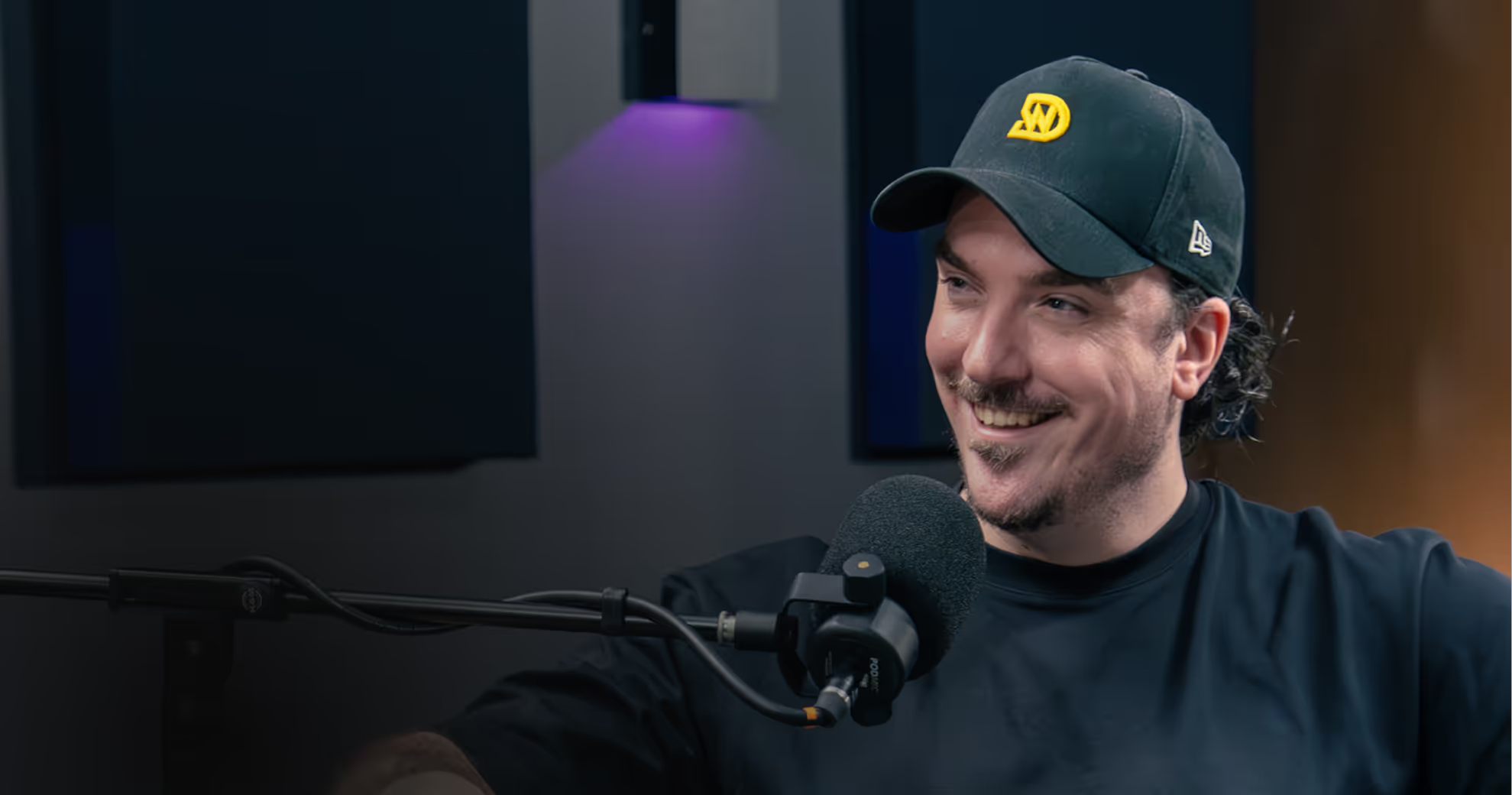
Work With Me
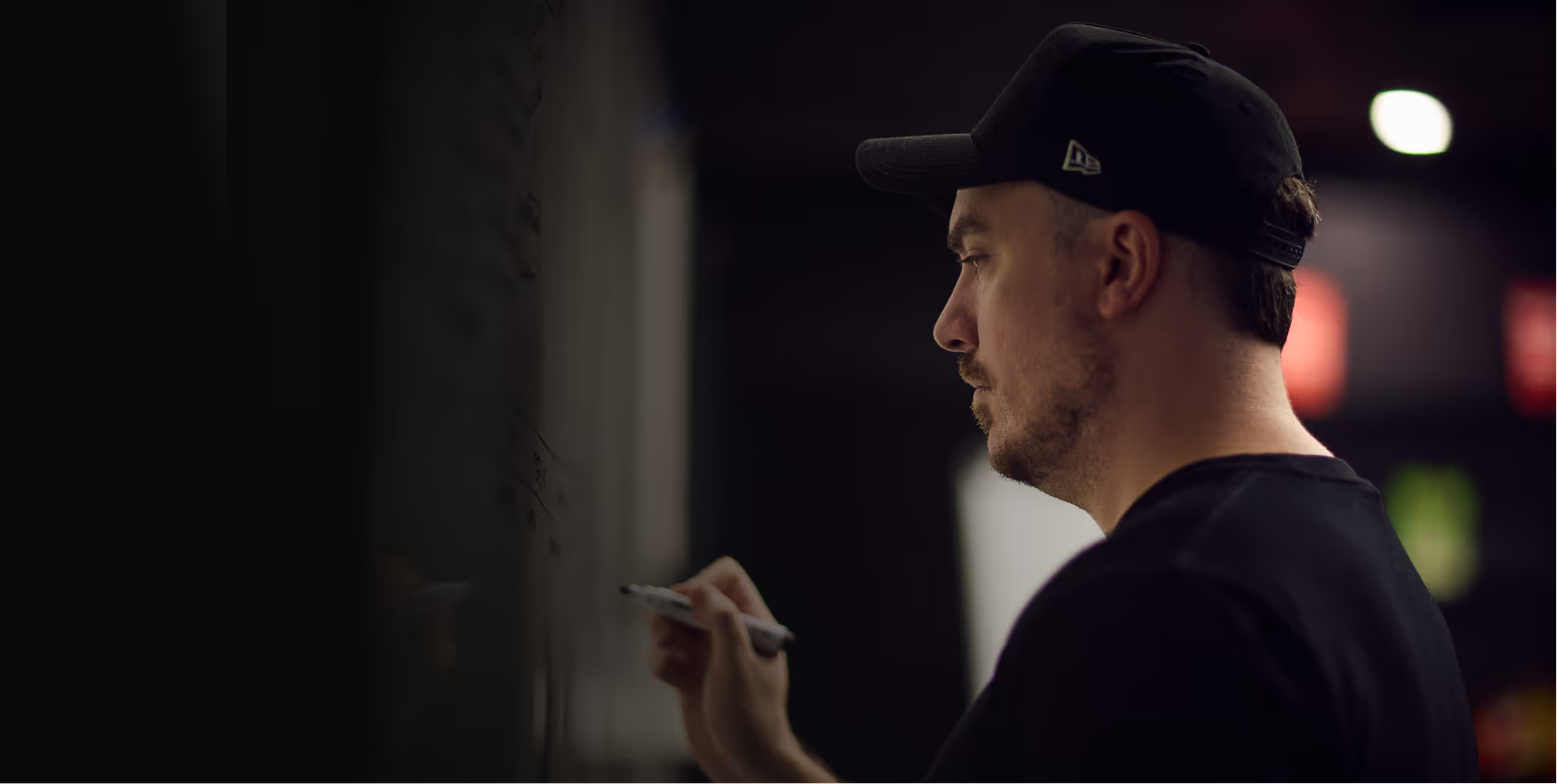
Enquire With Dain’s Team
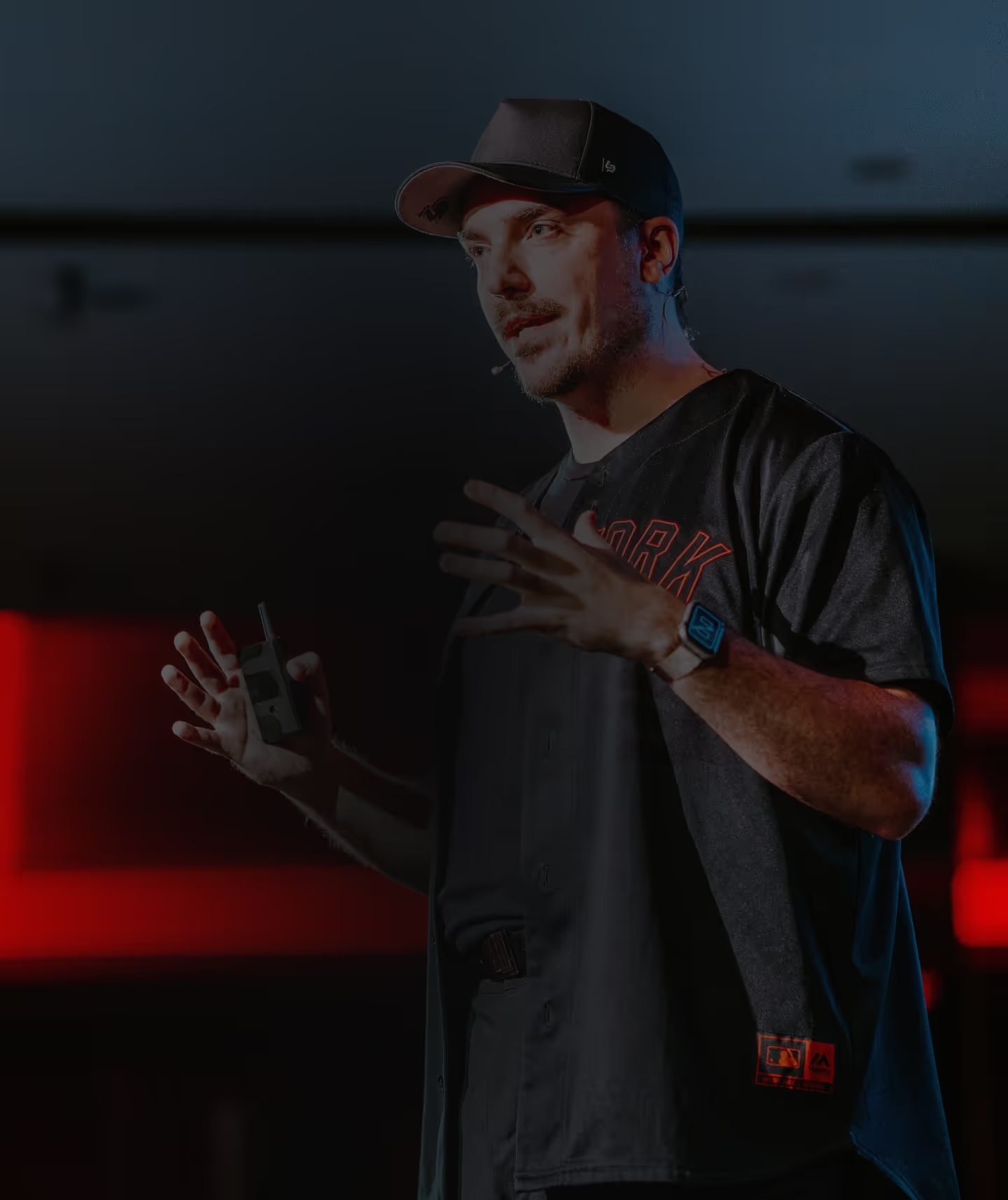
Enquire For Speaking

Let's Get You Branded
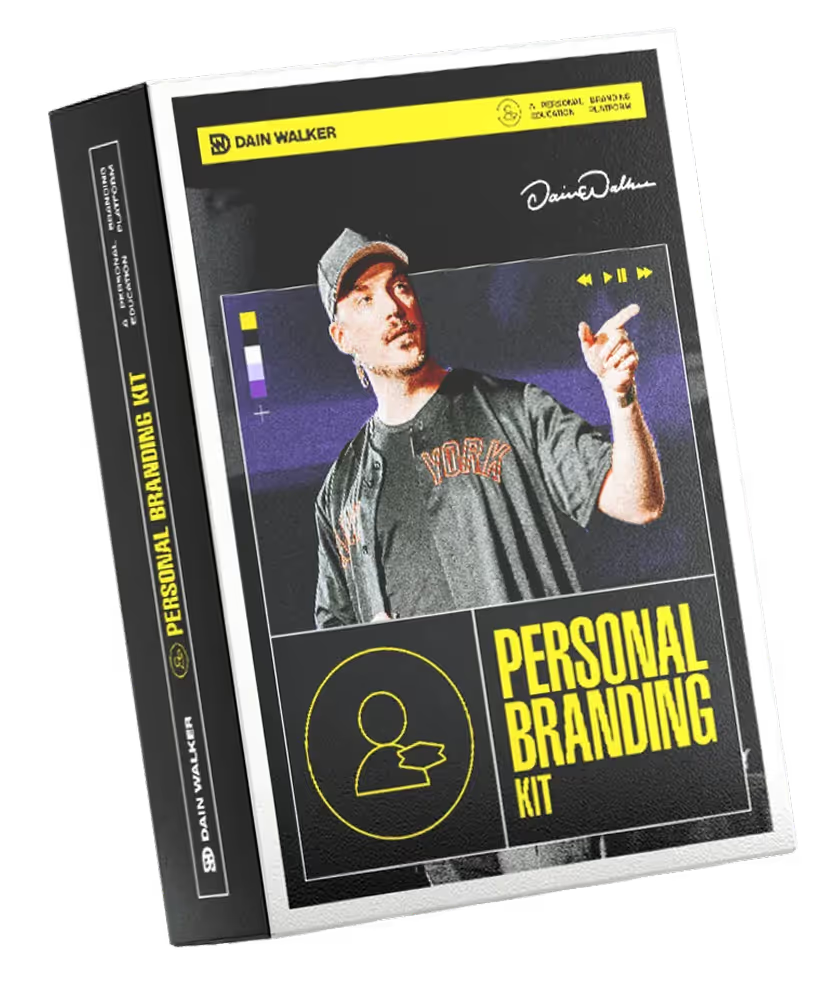
Apply to be a guest
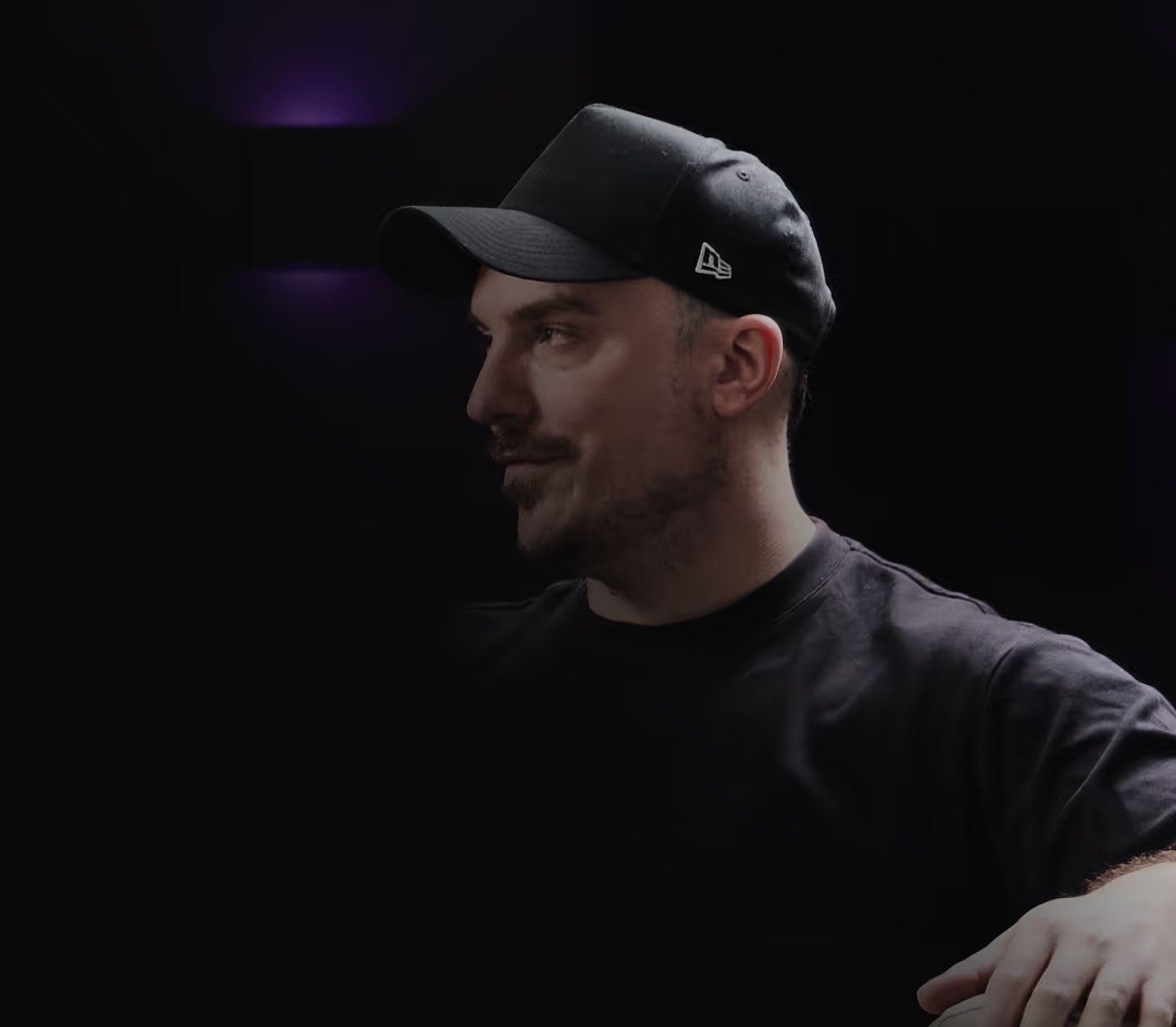
Dive into insights from industry leaders and experts.

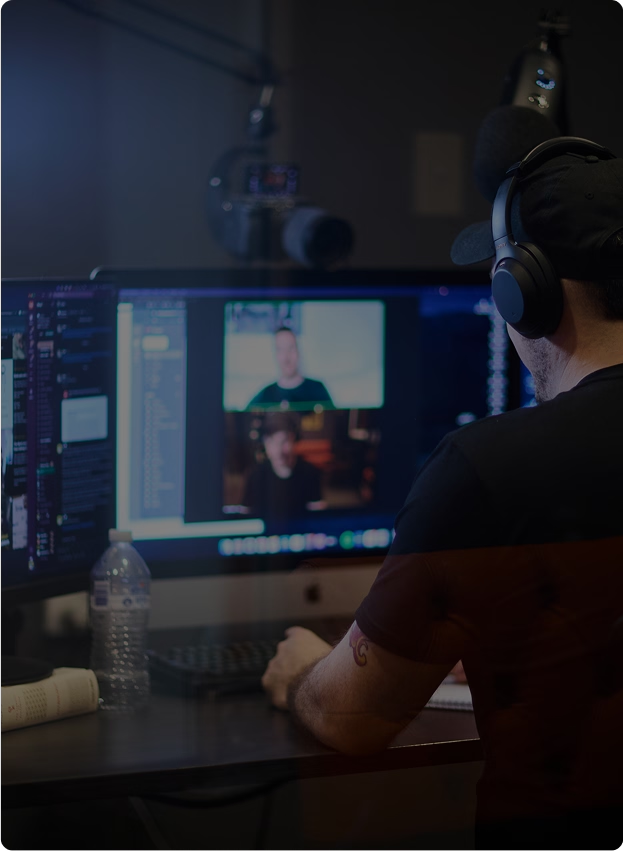
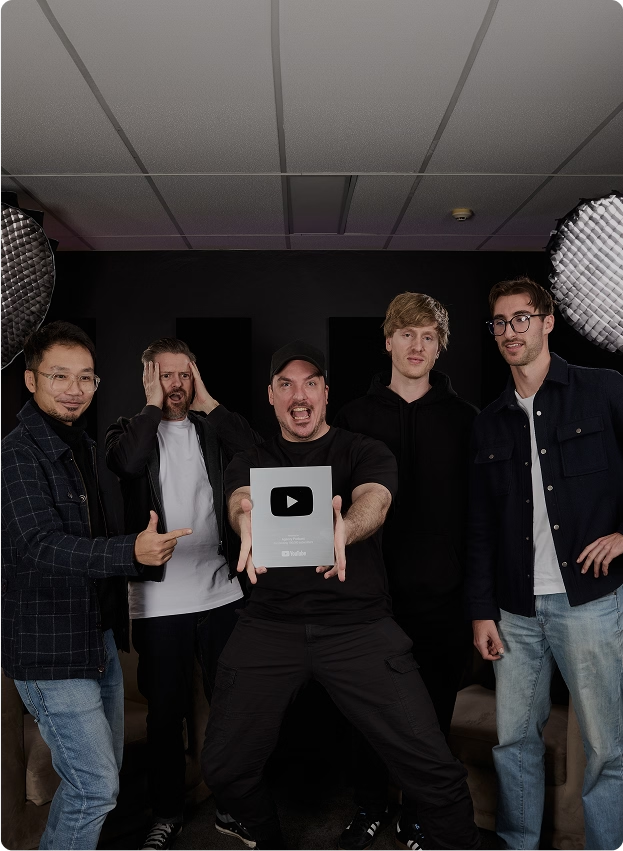
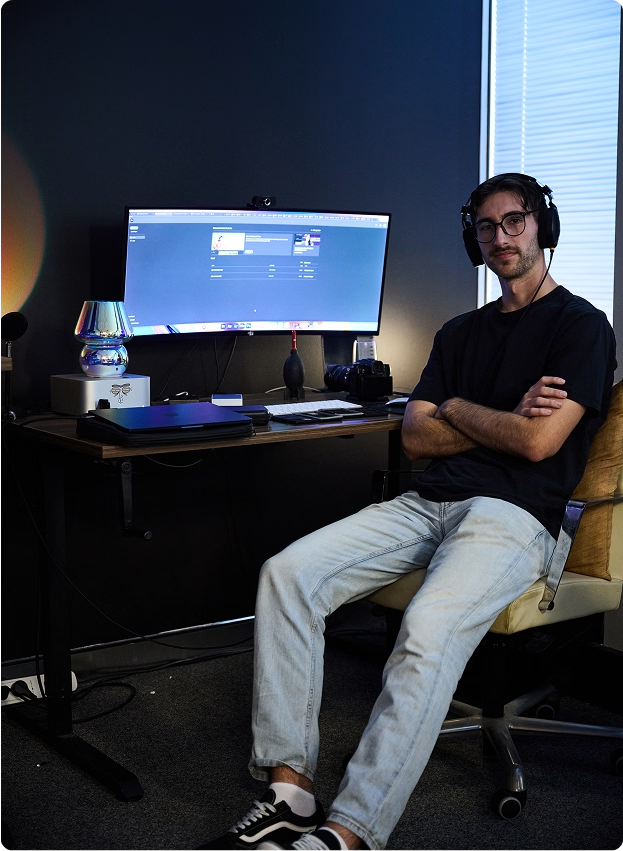
Stream now
Dive into expert advice and industry trends.
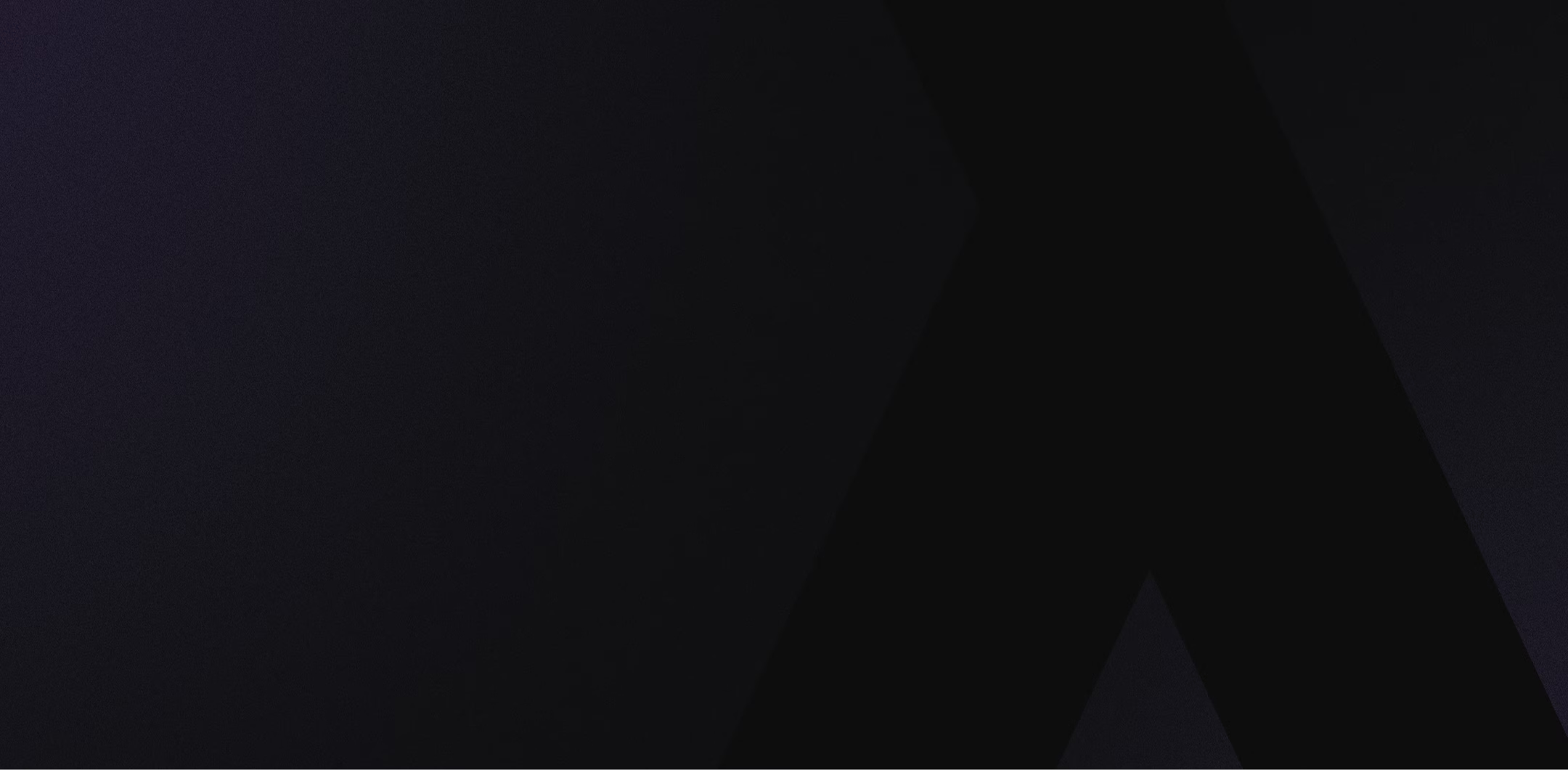

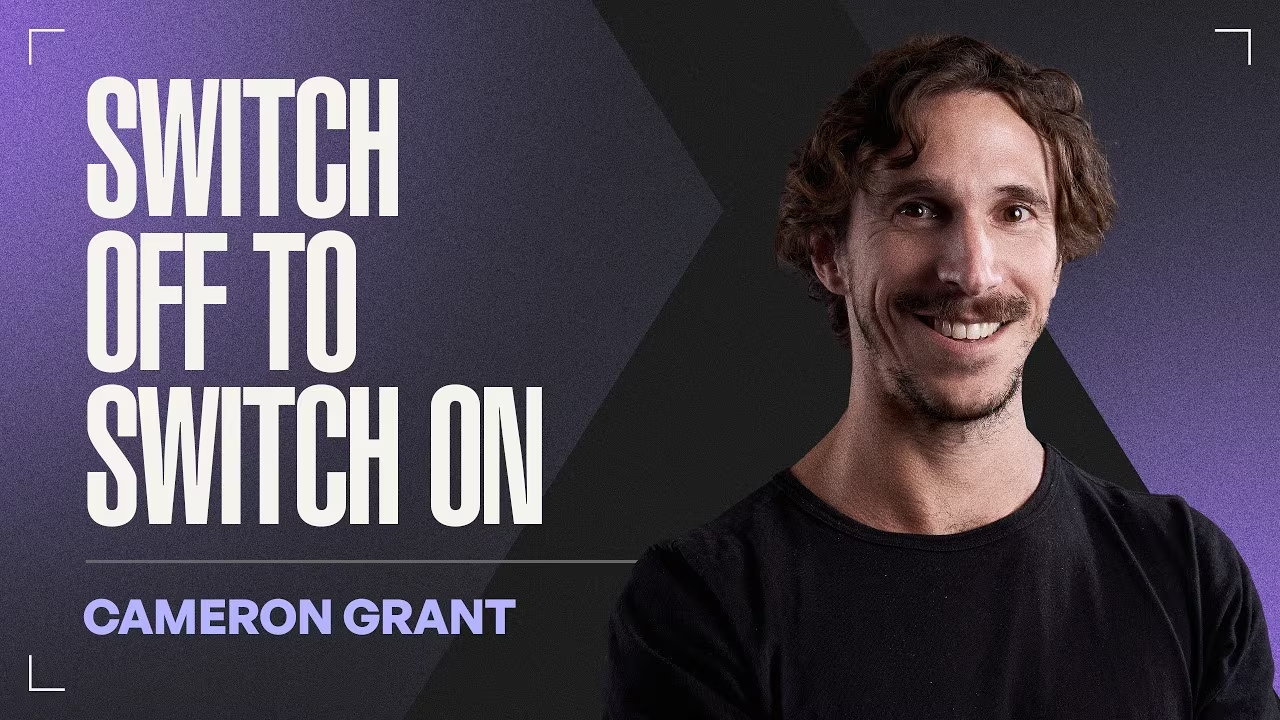
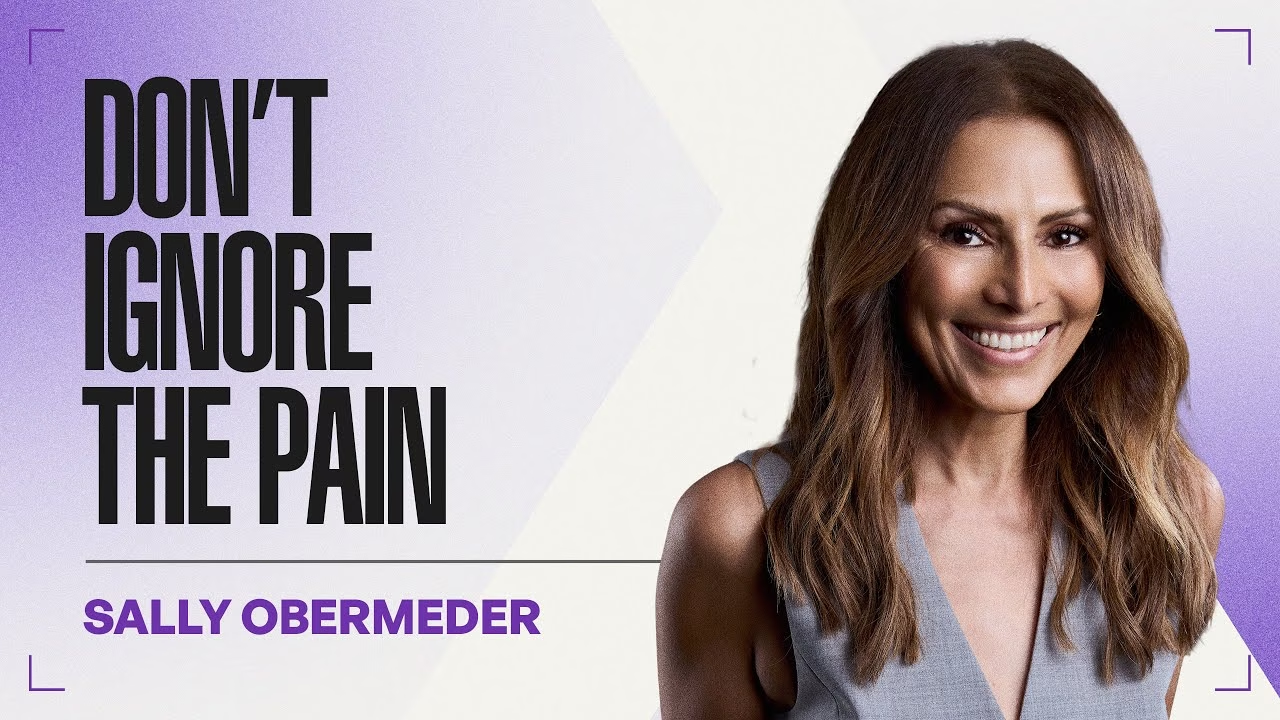
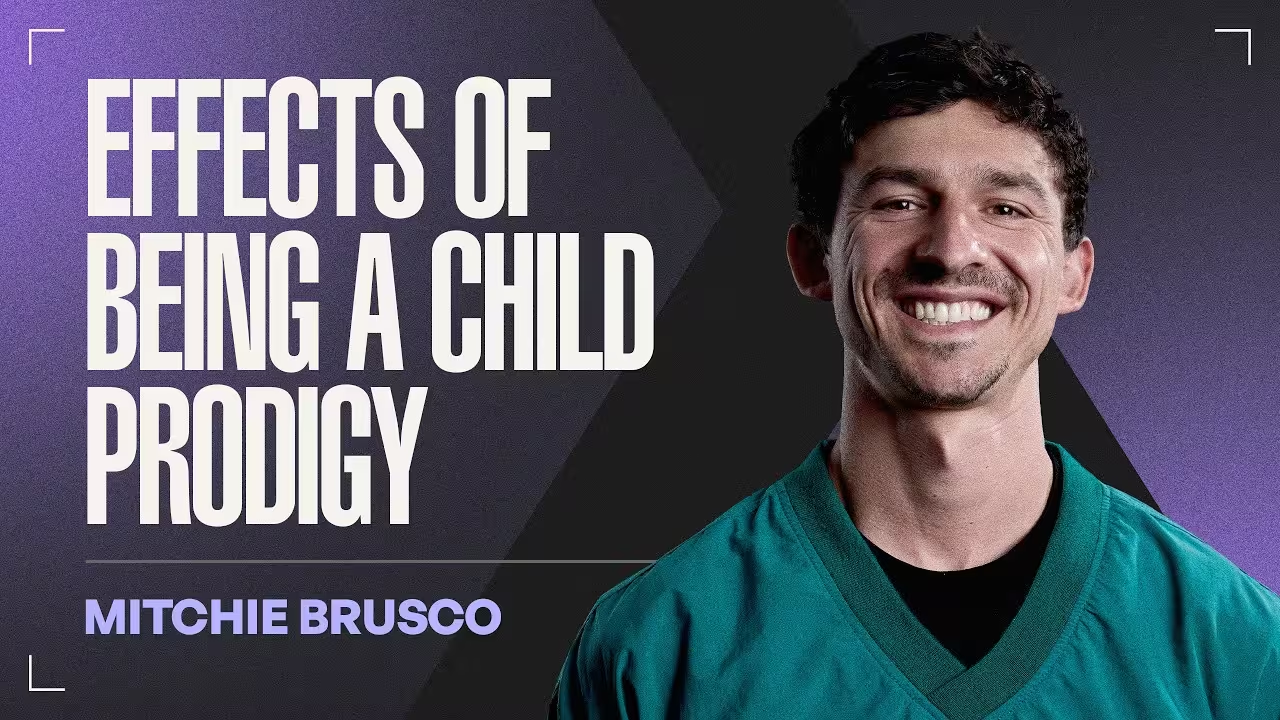
.avif)

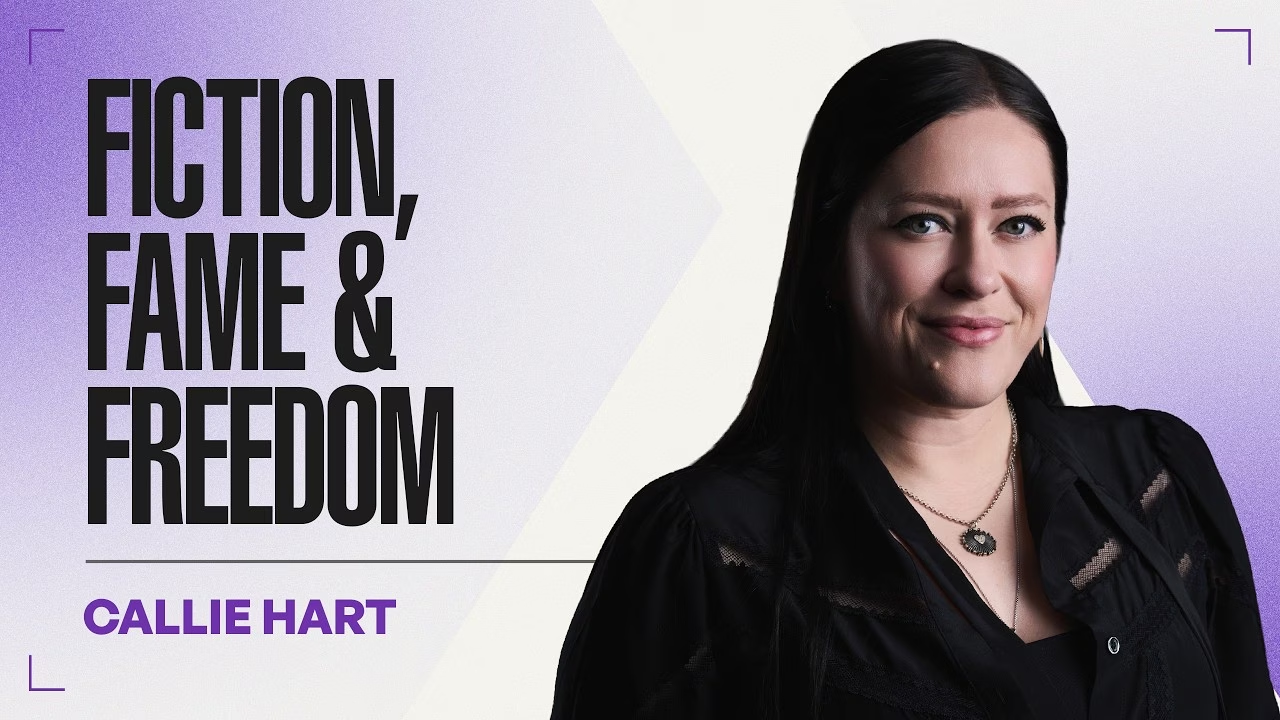

.avif)
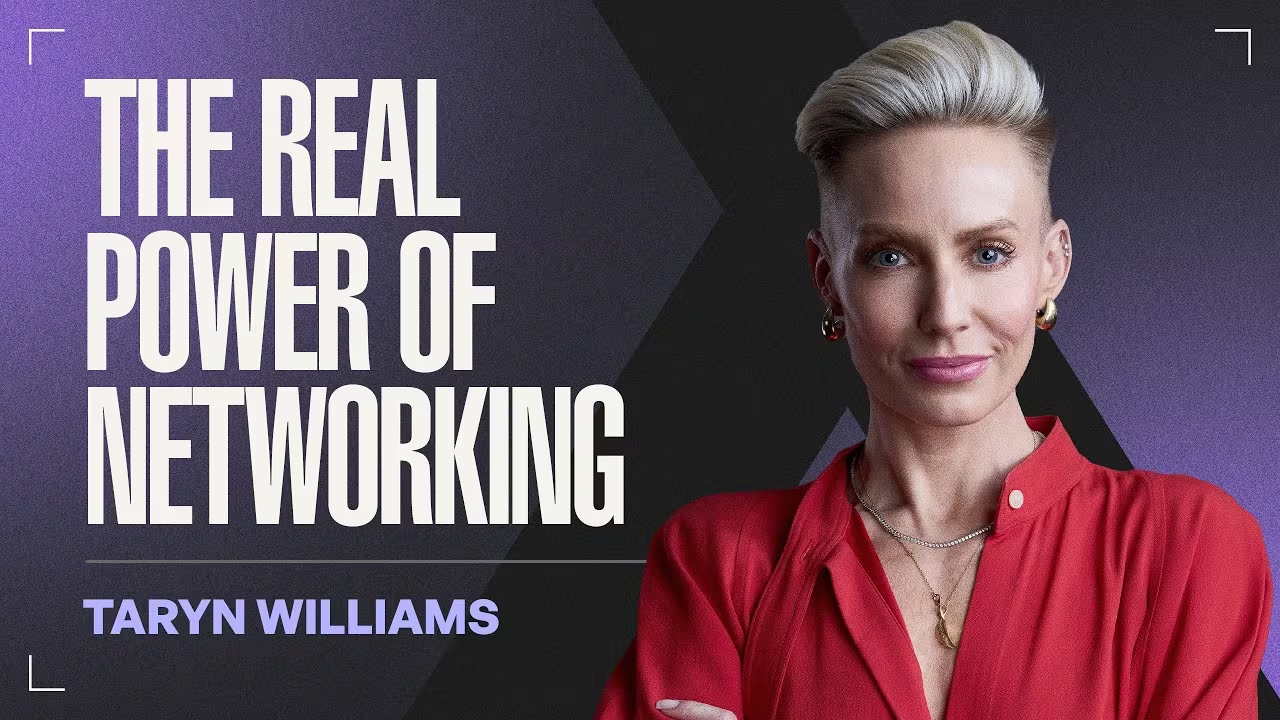

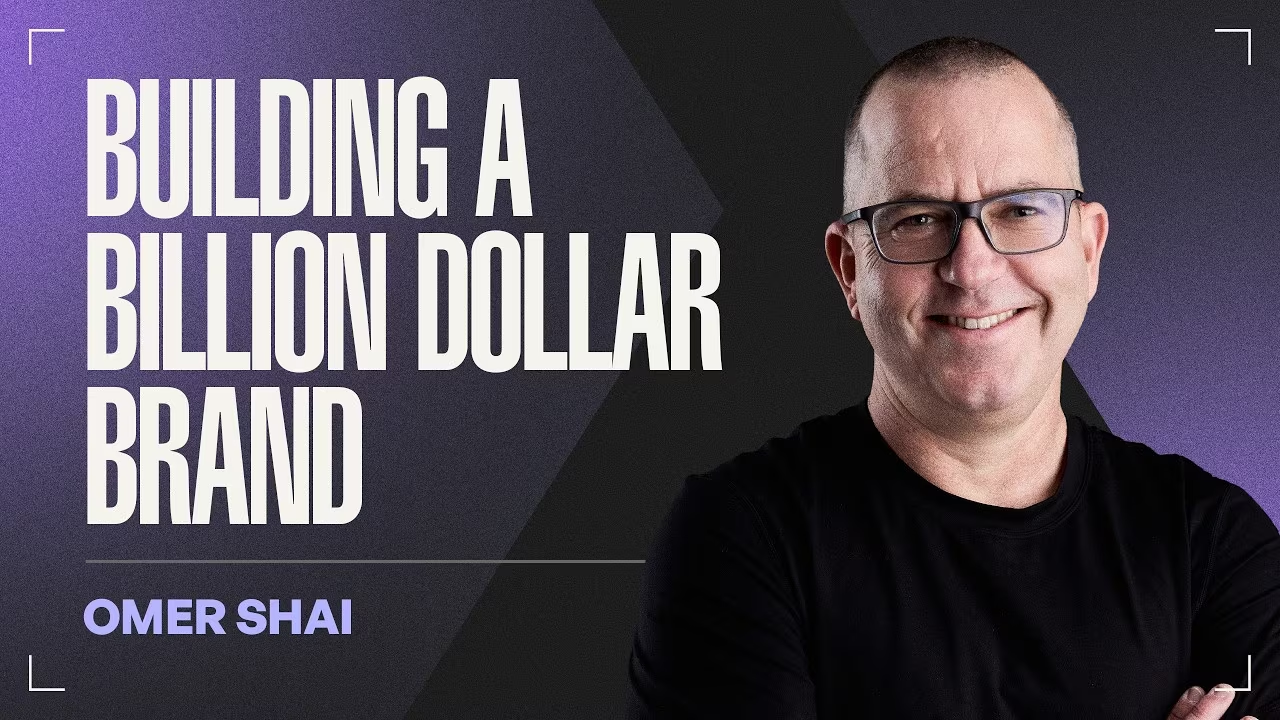
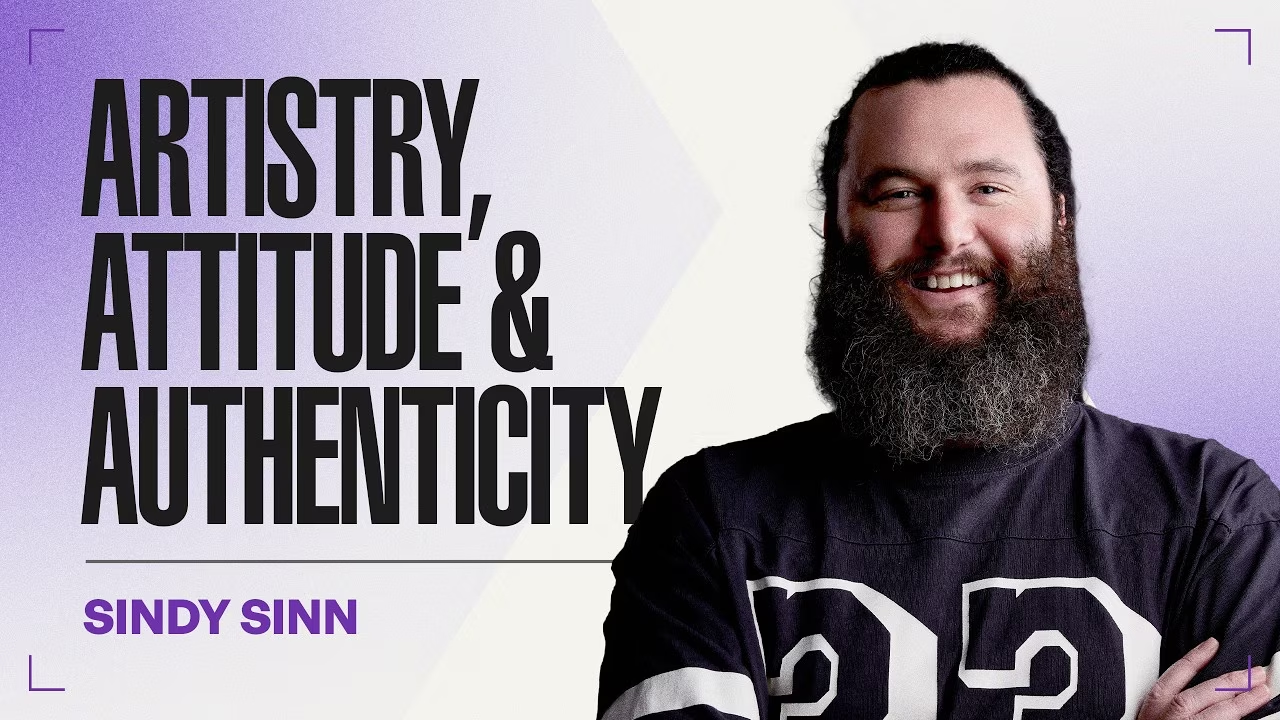
%20(1).avif)
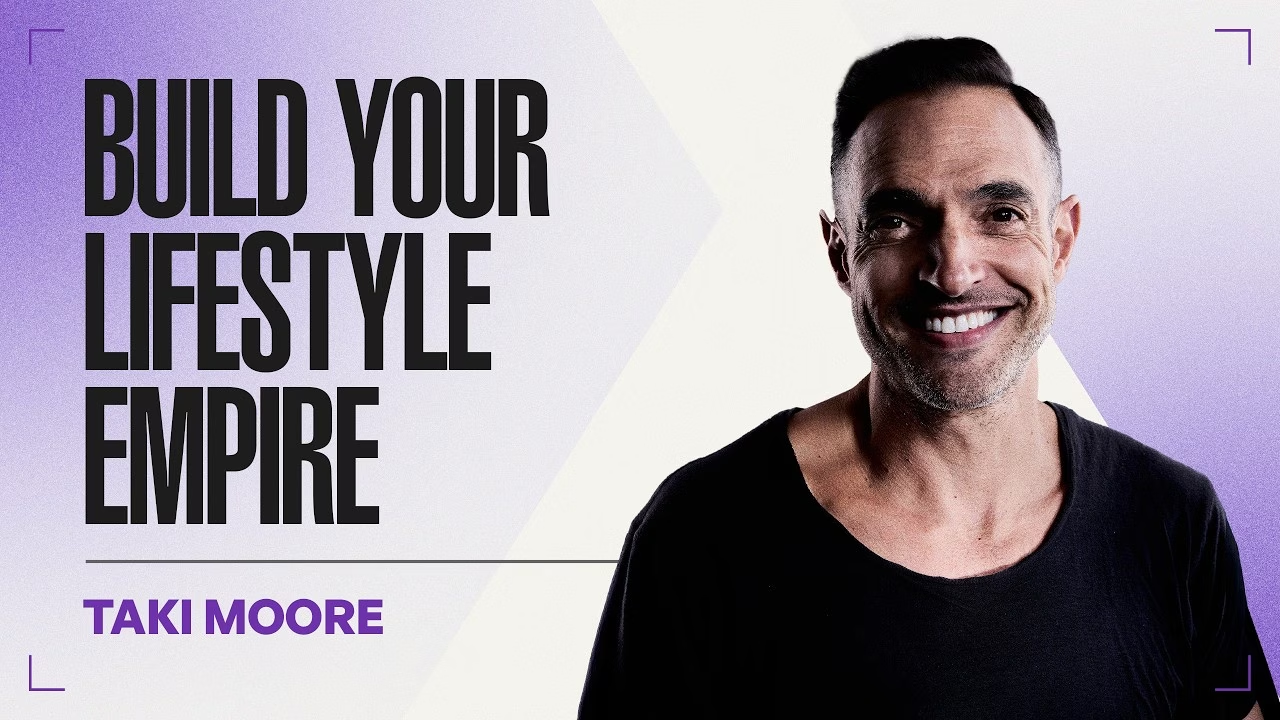
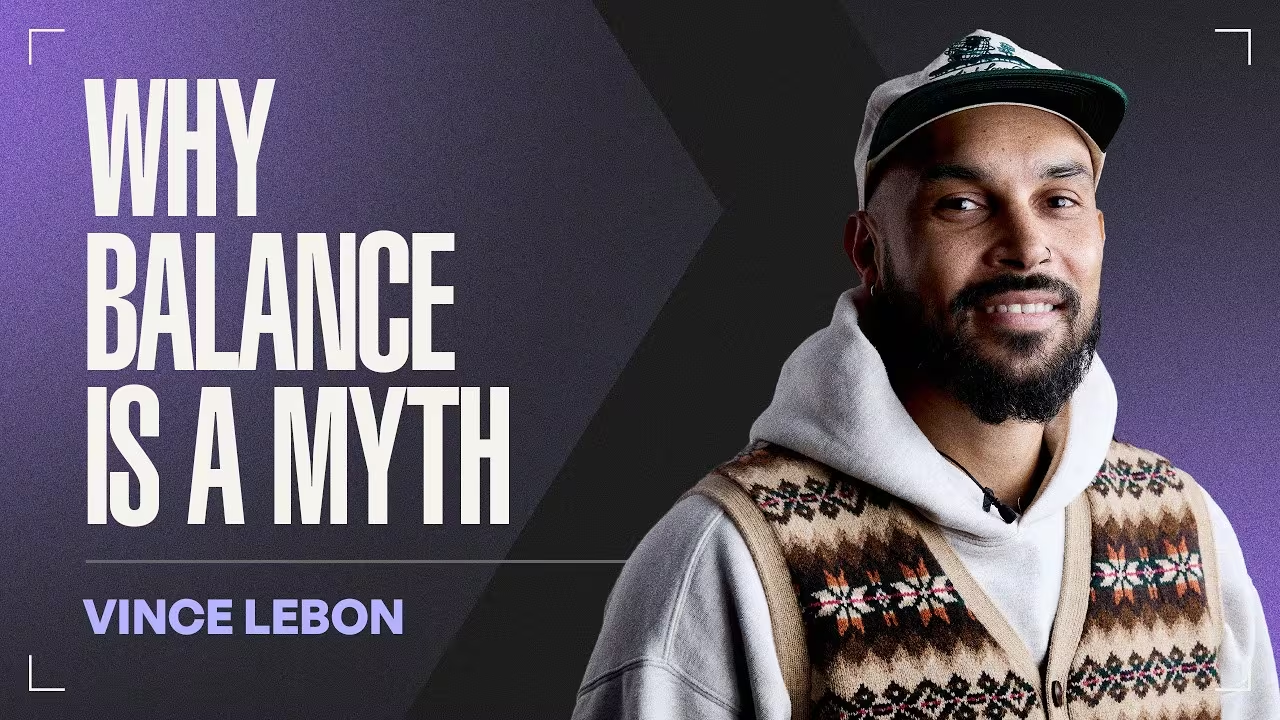
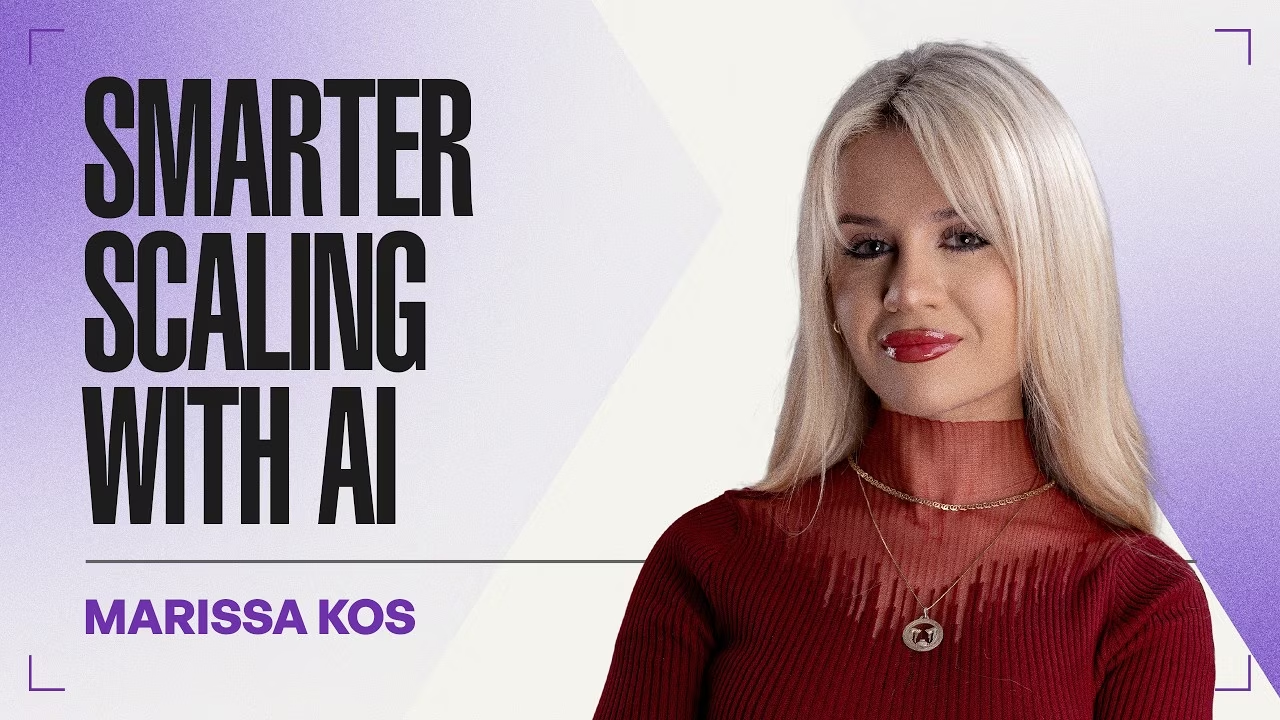
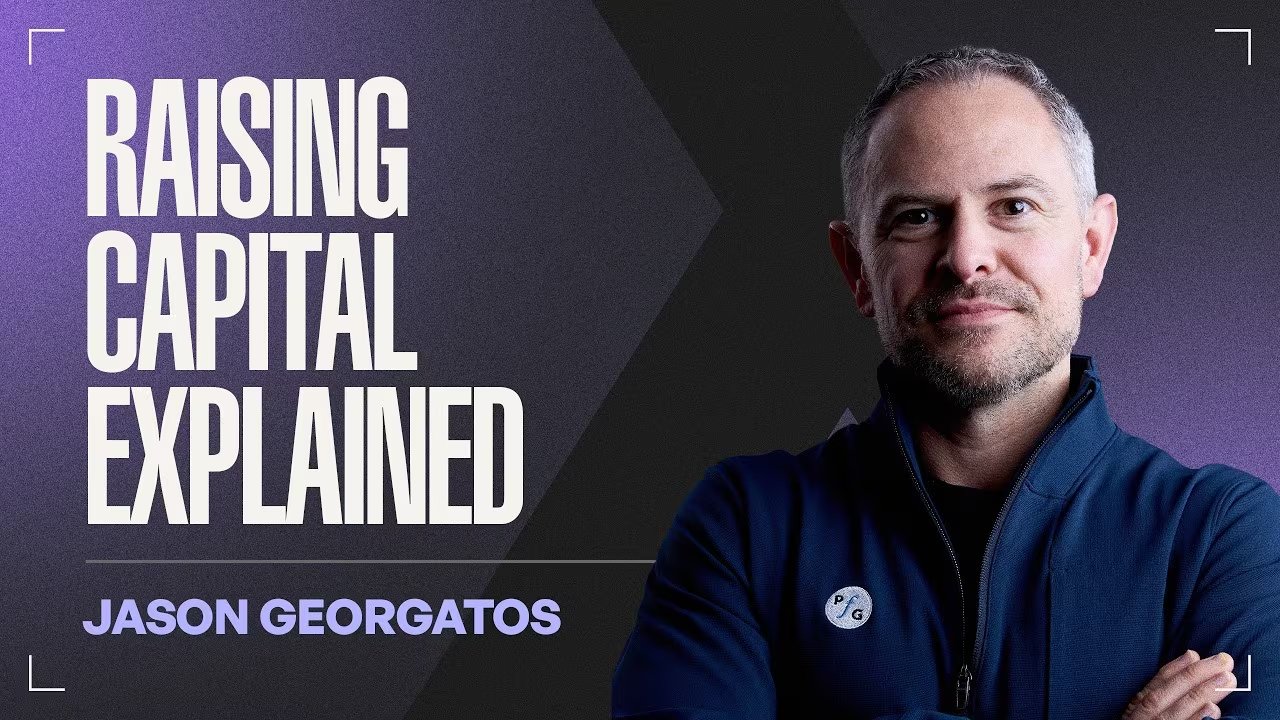
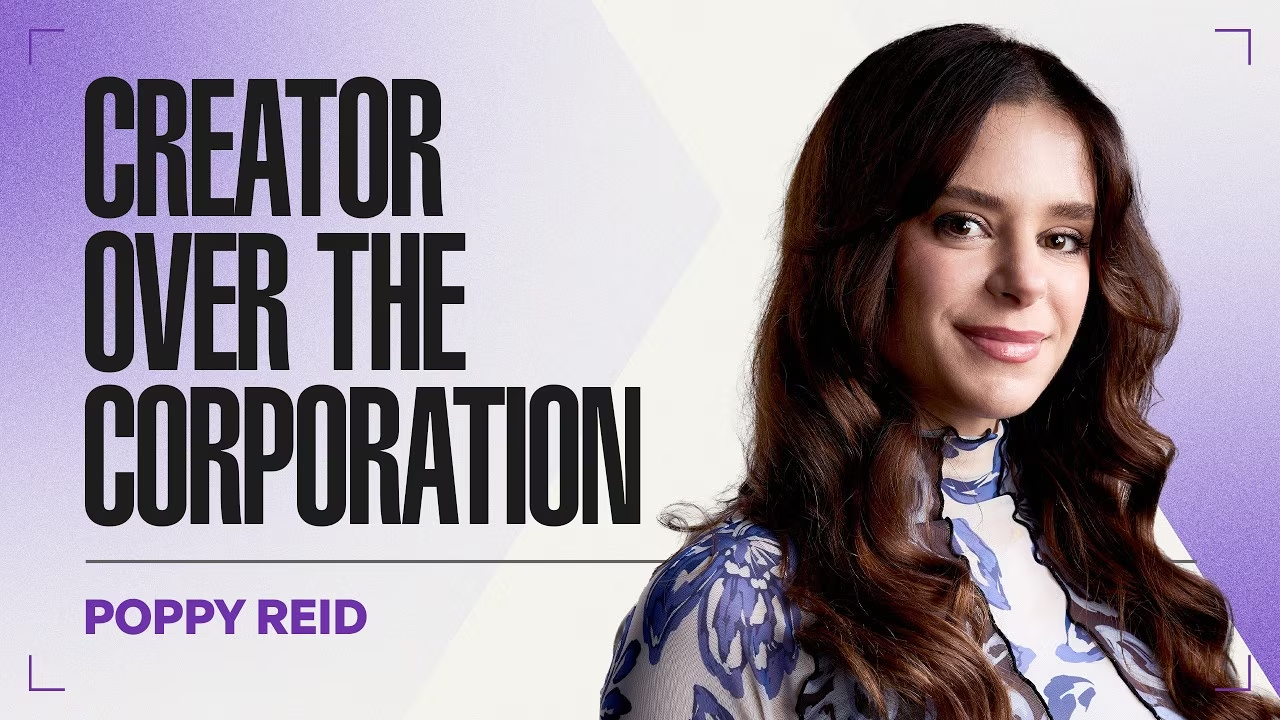
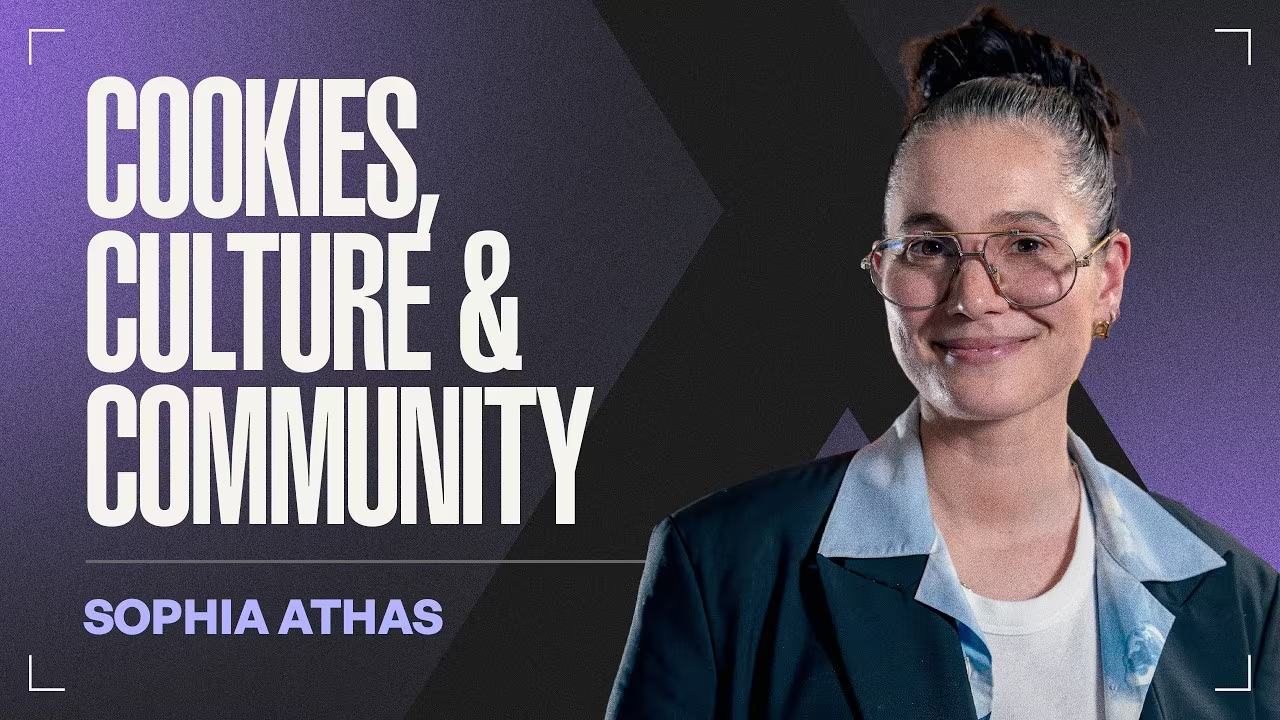

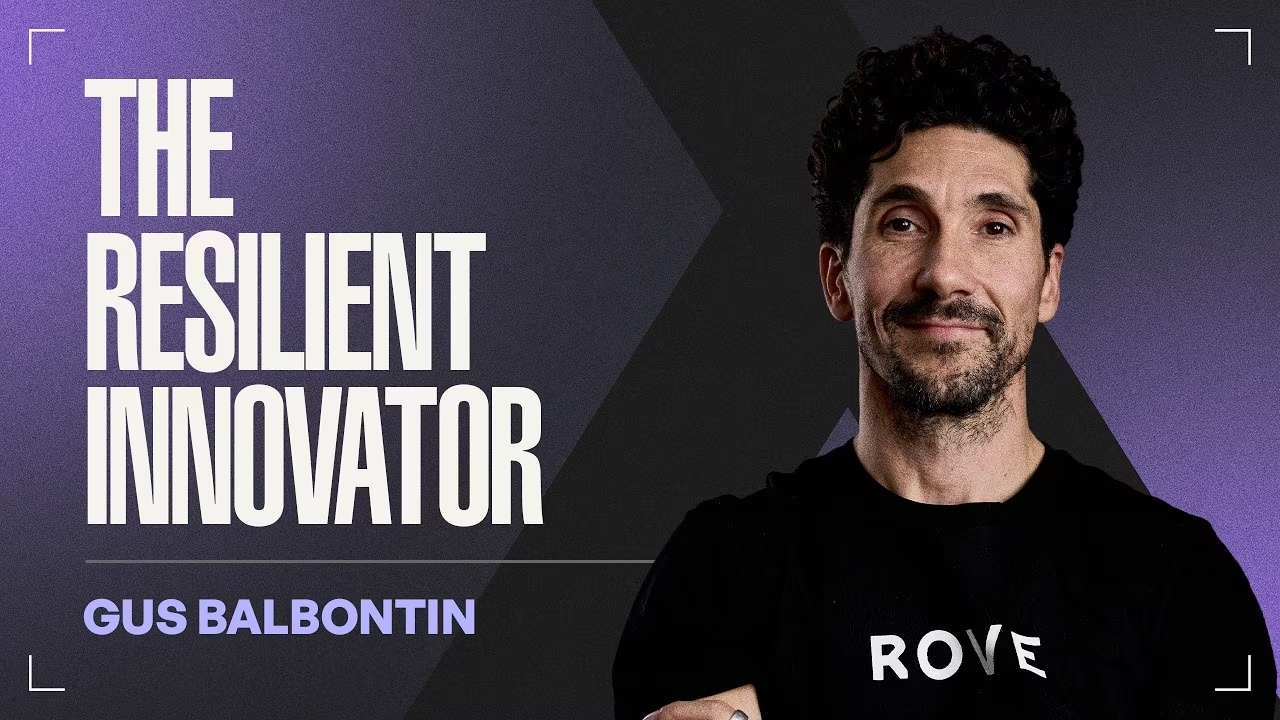
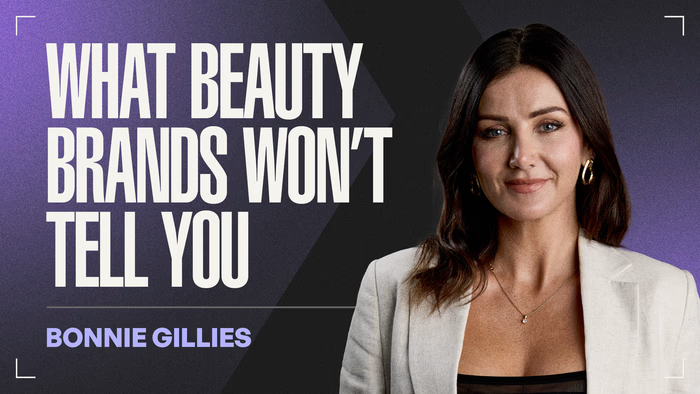


.avif)

